

I’m a seasoned marketer and sales strategist who first learned marketing out of necessity while running my own mortgage brokerage. In an era when the real estate industry was booming — yet ethically murky — I felt compelled to chart my own path. That meant mastering copywriting, direct mail, and digital strategies to make my small business stand out in a competitive market. It wasn’t just about closing deals; it was about building trust, doing right by clients, and adapting on the fly.
Key Highlights
1. Mortgage Roots & Marketing Mastery: Learned marketing firsthand in the mortgage industry by designing ethical, high-performing campaigns
2. AI Innovation: Creator of AI-driven marketing programs and an AI Sales Agent that helps businesses streamline lead generation, closing, and audience engagement
3. Board Advisory & Education: Advisory Board member at the National Small Business Association and curriculum contributor at the University of South Florida
4. Thought Leadership: Frequent guest on podcasts and webinars, demystifying AI tools, exploring tomorrow’s trends, and championing consumer trust
Today, I’ve taken that self-taught resilience and combined it with my passion for AI-powered marketing and sales solutions. My focus is on delivering concrete, ROI-focused strategies that help businesses scale while reducing overhead. To stay at the forefront, I invest heavily in ongoing education so I can translate the buzz around AI into practical, revenue-driving results.
Beyond this work, I serve on advisory boards like the National Small Business Association and contribute to university marketing programs. This allows me to share insights with the next generation of professionals and drive meaningful discussions about the ethics and evolution of AI in business.
What Drives Me
I believe in empowering businesses to embrace AI in a way that feels authentic and sustainable — amplifying the human element rather than replacing it. If you’re ready to enhance your marketing and sales strategy with proven, cutting-edge technology, let’s connect.
Available For: Advising, Authoring, Consulting, Influencing, Speaking
Travels From: Pompano Beach, FL
Speaking Topics: Digital Marketing, Branding, PR, Social Media Marketing, Email Marketing, Marketing ROI, AI in Sales, AI in Marketing
| Tabitha Jean Naylor | Points |
|---|---|
| Academic | 0 |
| Author | 221 |
| Influencer | 694 |
| Speaker | 0 |
| Entrepreneur | 40 |
| Total | 955 |
Points based upon Thinkers360 patent-pending algorithm.
Tags: Social, Leadership, Marketing
Tags: Social, Leadership, Marketing
Tags: Social, Leadership, Marketing
Tags: Social, Leadership, Marketing
Tags: Social, Leadership, Marketing
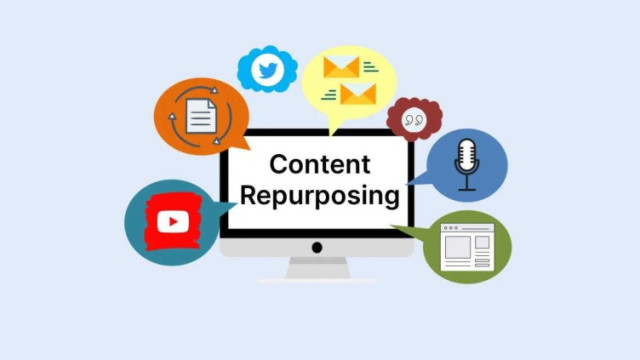 The Magic of Content Repurposing: Your Ultimate Guide
The Magic of Content Repurposing: Your Ultimate Guide
Tags: Marketing
Tags: Social, Leadership, Marketing
Tags: Social, Leadership, Marketing
Tags: Social, Leadership, Marketing
Tags: Social, Leadership, Marketing
 A Foolproof Guide to the Role of Colors in Generational Marketing
A Foolproof Guide to the Role of Colors in Generational Marketing
Tags: Marketing
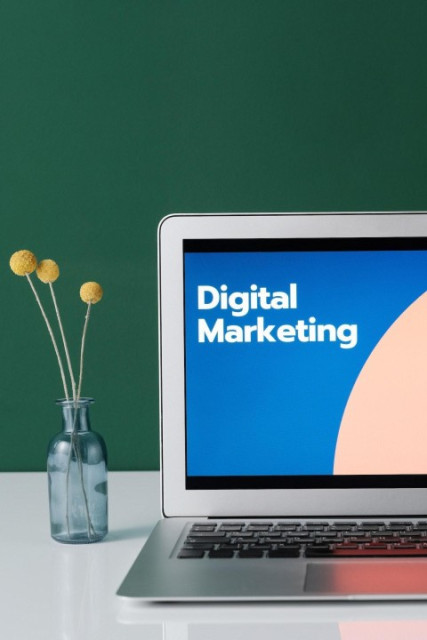 3 Ways to Adapt Your Marketing Strategy During Continued Inflation
3 Ways to Adapt Your Marketing Strategy During Continued Inflation
Tags: Marketing
 5 Ways to Improve Your Social Media Presence... That Actually Work
5 Ways to Improve Your Social Media Presence... That Actually Work
Tags: Marketing
 3 Proven Tips to Adapt Your Marketing Strategy for the Nagging Headache Called an Inflation
3 Proven Tips to Adapt Your Marketing Strategy for the Nagging Headache Called an Inflation
Tags: Marketing, Supply Chain
 10 Post Ideas Guaranteed to Boost Engagement on Facebook and Instagram
10 Post Ideas Guaranteed to Boost Engagement on Facebook and Instagram
Tags: Marketing
 7 Simple Referral Marketing Strategies for Small Businesses
7 Simple Referral Marketing Strategies for Small Businesses
Tags: Marketing, Sales
 Direct Response Marketing Campaigns That Deliver Results
Direct Response Marketing Campaigns That Deliver Results
Tags: Marketing, Business Strategy
 3 Ways You Can Use YouTube to Promote Your Small Business
3 Ways You Can Use YouTube to Promote Your Small Business
Tags: Social, Leadership, Marketing
 A Guide to Setting Up Online Orders for Your Small Business
A Guide to Setting Up Online Orders for Your Small Business
Tags: Social, Leadership, Marketing
 7 Simple Referral Marketing Strategies for Your Business
7 Simple Referral Marketing Strategies for Your Business
Tags: Social, Leadership, Marketing
 Your Roadmap for Digital Marketing in 2022
Your Roadmap for Digital Marketing in 2022
Tags: Social, Leadership, Marketing
 3 Things Google Hates About Your Website
3 Things Google Hates About Your Website
Tags: Social, Leadership, Marketing
 How Can You Maximize Your Return On Marketing Efforts?
How Can You Maximize Your Return On Marketing Efforts?
Tags: Social, Leadership, Marketing
 3 Common Mistakes Everyone Makes with Facebook Ads
3 Common Mistakes Everyone Makes with Facebook Ads
Tags: Social, Leadership, Marketing
 Why Every Business Should Introduce Digital Marketing into Their Strategies
Why Every Business Should Introduce Digital Marketing into Their Strategies
Tags: Social, Leadership, Marketing
 Women Entrepreneurs Can Magazine
Women Entrepreneurs Can Magazine
Tags: Management, Marketing, Entrepreneurship, Business Strategy
 TabithaNaylor.com
TabithaNaylor.com
Tags: Marketing, Entrepreneurship

Tags: Leadership, Marketing, Entrepreneurship

Tags: Leadership, Marketing, Entrepreneurship

Tags: Leadership, Marketing, Entrepreneurship

Tags: Leadership, Marketing, Entrepreneurship

Tags: Leadership, Marketing, Entrepreneurship

Tags: Leadership, Marketing, Entrepreneurship

Tags: Leadership, Marketing, Entrepreneurship

Tags: Leadership, Marketing, Entrepreneurship

Tags: Leadership, Marketing, Entrepreneurship

Tags: Leadership, Marketing, Entrepreneurship

Tags: Leadership, Marketing, Entrepreneurship

Tags: Leadership, Marketing, Entrepreneurship

Tags: Leadership, Marketing, Entrepreneurship

Tags: Leadership, Marketing, Entrepreneurship

Tags: Leadership, Marketing, Entrepreneurship

Tags: Leadership, Marketing, Entrepreneurship

Tags: Leadership, Marketing, Entrepreneurship

Tags: Leadership, Marketing, Entrepreneurship

Tags: Leadership, Marketing, Entrepreneurship

Tags: Leadership, Marketing, Entrepreneurship

Tags: Leadership, Marketing, Entrepreneurship

Tags: Leadership, Marketing, Entrepreneurship

Tags: Leadership, Marketing, Entrepreneurship

Tags: Leadership, Marketing, Entrepreneurship

Tags: Leadership, Marketing, Entrepreneurship
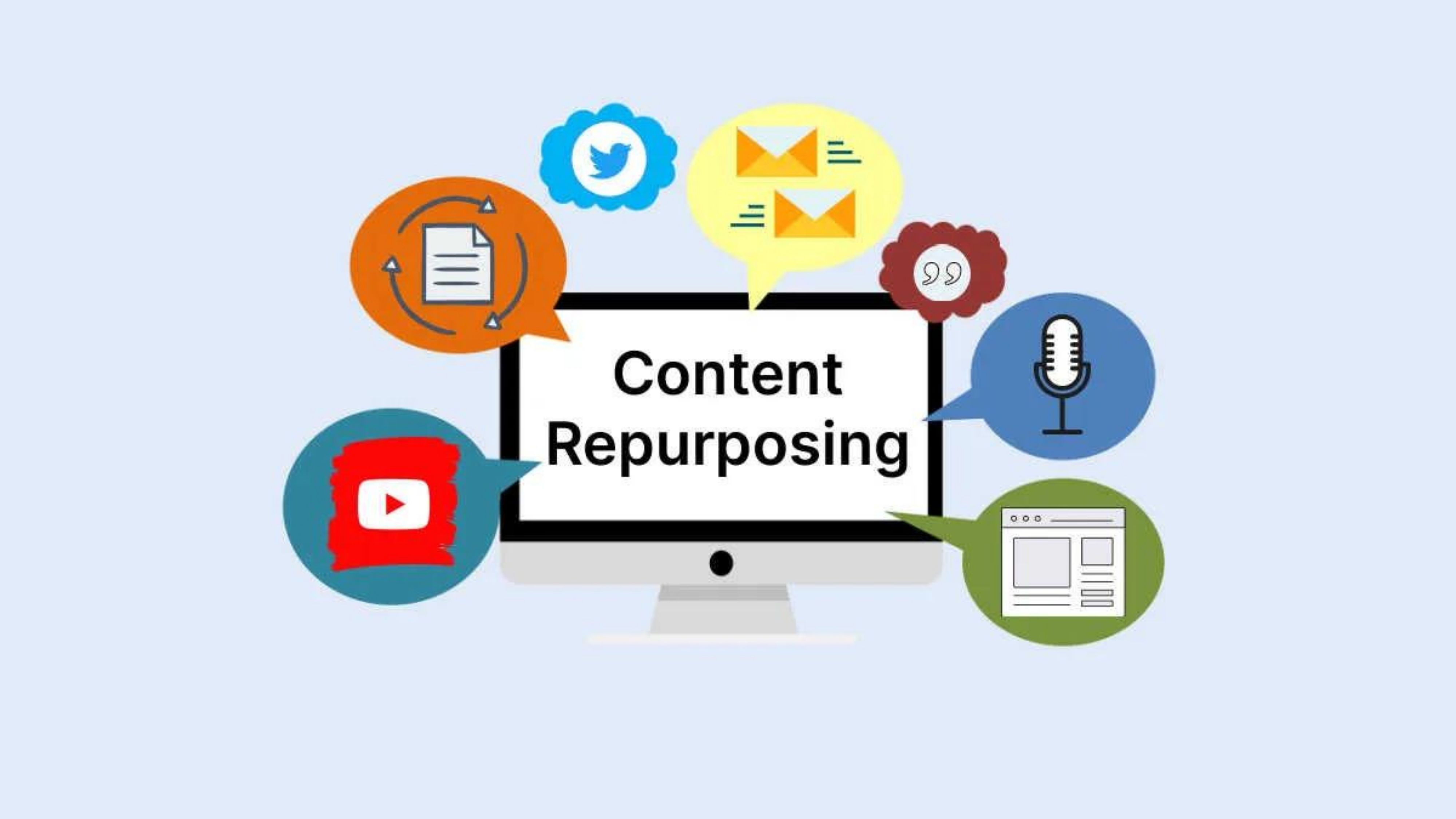 The Magic of Content Repurposing: Your Ultimate Guide
The Magic of Content Repurposing: Your Ultimate Guide
Let's talk about a secret that your favorite creators and brands swear by – content repurposing.
You see, creating fresh content every single day is neither practical nor necessary, even for those with deep pockets and a sizable team.
Instead, the real magic lies in repurposing content, taking one piece and giving it new life in various forms across different platforms.
Before we dive into how to do it, let's address the "why." There are several compelling reasons why content repurposing is a game-changer:
Now, let's clarify a few things…
So, now then the question becomes: how does content repurposing differ from cross-marketing or republishing?
Repurposing involves reshaping existing content while considering the platform and audience. It's about understanding what works best on each platform and tailoring your content accordingly. For instance, you can transform a YouTube video into bite-sized clips for YouTube Shorts.
On the other hand, cross-marketing is simply posting the same content across different platforms. It's about sharing content as-is on different channels.
Republishing, well, that's just reposting without any changes. The key distinction is that repurposing requires some degree of "transformation."
Now, let's get practical. There are countless ways to repurpose content, depending on its form and media.
Here are some common examples:
Let's look at AdEspresso by Hootsuite. They took one of their top-performing blog posts and turned it into a Slideshare presentation.
The result?
The Slideshare presentation brought in a whopping 3900 visits in just the first ten days.
Ever come across a long-form article packed with data and statistics that made your head spin?
If so, you're not alone!
Research shows that people are 65% more likely to remember information when it's presented in a visual format. That's where infographics come in as our trusty sidekick.
So, here's the deal: if you have articles, blogs, or ebooks loaded with valuable data, consider transforming that data into eye-catching infographics. These graphical wonders simplify complex information, making it a breeze for your readers to understand and, more importantly, remember.
Let's say you've penned a data-rich blog post. You can take the juiciest bits of information, create a visually appealing infographic, and seamlessly embed it within your blog. This not only breaks the monotony of text but also adds an interactive element that your readers will appreciate.
But wait, there's more!
You can take these shiny infographics and share them on your social media platforms. When your audience sees bite-sized, visually appealing snippets of information, their curiosity is piqued.
And where do they go to satisfy that curiosity?
Back to your blog, of course!
Have you ever stumbled upon a thought-provoking quote that stayed with you for days? Quotes have the power to inspire, resonate, and ignite conversations.
Now, think about your blog posts – they're treasure troves of insightful quotes, whether they're your own brilliant musings or gems from thought leaders you've cited.
Here's a neat trick: extract those nuggets of wisdom and share them on your social media channels. It's as easy as crafting a simple tweet or LinkedIn post. Provide a bit of context, maybe a snippet from your blog that leads to the full story, and watch as your audience engages with your content.
But don't stop there!
Visual content reigns supreme on platforms like Instagram. Turn your quotes into eye-catching images and share them with your Insta audience. Hubspot Academy nailed it by taking a quote from their blog post and using it to entice viewers to explore the full article.
In the fast-paced world of online content, posts come and go like fleeting moments. It's easy for your audience to forget what they've seen. However, when it comes to blog posts, you hold the power to breathe new life into them.
Update your older blog posts with fresh stats and facts, and then repost them. It's a fantastic way to keep your content relevant and top-of-mind for both new and returning readers.
Remember, repurposing and reposting content isn't a shortcut or a lazy hack… it's a strategic move. It's your ticket to expanding your audience, giving evergreen content the spotlight it deserves, saving precious time, and ultimately enhancing your content efficiency.
So, if you've been on the fence about content repurposing, take this as your sign to dive right in. Infographics and quotes are just the beginning of your content transformation journey. Embrace these strategies, and watch your content strategy soar to new heights.
Happy repurposing, and may your content shine brighter than ever!
Tags: Business Strategy, Marketing, Social
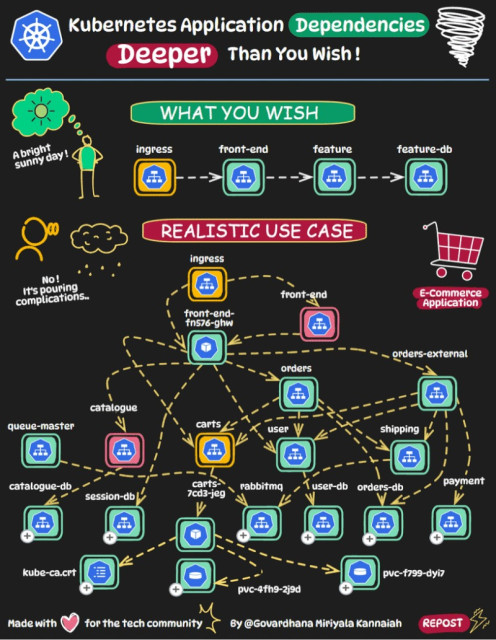 How to Use AI to Generate Amazing Content
How to Use AI to Generate Amazing Content
Are you keeping up with the latest buzz around artificial intelligence (AI)?
It's literally everywhere you turn, from news headlines to casual conversations... so much so that it's hard to escape the AI chatter.
What's even more astounding is how quickly it's become part of our everyday lives.
Remember when AI seemed like science fiction, something reserved for tech moguls like Elon Musk and Mark Zuckerberg? It felt out of reach for the average person like you and me. But boy, have things changed, and they've changed fast. Today, AI is right here, right now, and it's accessible to all of us.
So, let's talk about how we can make the most of this incredible technology.
First things first, let's break down AI. It's not as complicated as it may seem.
AI-generated content is born from something called a "large language model." Basically, it's a system that can process and generate human language. This system relies on a neural network architecture known as a "transformer" to analyze and comprehend text data.
In its more advanced form, AI can create human-like writing that's pretty convincing. But you've probably encountered a simpler version of AI without even realizing it – think about predictive text on your smartphone. Yeah, it can be a bit of a nuisance at times, but it's there to help you type faster and more efficiently.
Now, here's a cool fact: AI has gotten so good that someone actually used an AI platform called Midjourney to create an award-winning work of art!
In recent years, AI has been making significant contributions across various fields, from healthcare and education to environmental sustainability.
Let's get even more practical.
AI isn't just a buzzword; it's making real changes in the world.
"Smart" technologies powered by AI are helping reduce carbon emissions and providing support to people with disabilities. And you've definitely seen AI in action with self-driving cars, voice-to-text speech recognition software, and market trend forecasting.
Fast forward to November 2022 when ChatGPT took the AI world by storm. Its open-source technology became accessible to everyone, and best of all, it was free. It was like opening Pandora's box, but instead of all evils, we got a taste of AI's immense potential.
But like any great innovation, it came with its challenges. People started noticing quirks in ChatGPT's content generation, and AI detection software emerged to tell human-generated content from AI's handiwork.
Now, let's talk Google. You'd think Google would slam the door on AI-generated content, right? Well, here's the twist – it doesn't. Google isn't thrilled with the idea of AI being used to churn out tons of content solely for the sake of better search engine rankings (a.k.a. "black hat" techniques).
But here's the thing: Google doesn't judge content solely by its source. It sticks to its core criteria, including factors like user experience, expertise, authoritativeness, and trustworthiness. In Google's world, experience and expertise go hand in hand. The more experience you have, the more expertise you can bring to your content.
To keep Google happy, your content should be relevant, accurate, and rock-solid when it comes to fact-checking. That's what gives your content that stamp of authority Google loves.
And finally, whether you're representing yourself or your brand, your content should embody these three elements, leading to the last requirement – trustworthiness.
But here's the kicker: AI sometimes drops the ball on these elements. It's even been caught fabricating facts. So, don't blindly trust what AI generates. Fact-checking, proofreading, and editing should be non-negotiable steps when you're creating AI-generated content.
Okay, let's roll up our sleeves and dive into how to make the most of AI-generated content, whether you're the content creator or the collaborator. Here are some tips to ensure your content shines:
There's no denying the incredible potential of AI in content creation, but it's a tool that requires smart handling. By following these best practices, you can leverage AI to elevate your content strategy. Experiment, strike the right balance between automation and human creativity, and watch your content shine.
So, are you ready to dive into the world of AI-driven content creation?
If so, let's embark on this exciting journey together!
Keep exploring, stay curious, and embrace the possibilities that AI brings to the table.
Tags: AI, Emerging Technology, Generative AI
 Meta Threads: What You Should Be Aware of Before Stringing Up
Meta Threads: What You Should Be Aware of Before Stringing Up
Unless you were living under a rock mid-to-late summer of this year, you probably know that Meta unveiled Threads to facilitate more seamless communication and text sharing.
It's essentially like Twitter, sans the Elon Musk circus going on in the background.
In fact, on the surface, it certainly has a Twitter-like feel, but it gets some brownie points for a better user experience featuring ease of use and privacy for your more private conversations.
Threads reportedly witnessed a staggering 30 million downloads within only 16 hours of its launch on July 5. The number of Threads users as of now is well past the 120 million mark.
According to Neil Patel, “People thought it was impressive how ChatGPT crossed 1 million users in five days… but Threads by Instagram blew everyone out of the water, and even Facebook didn’t expect it to do this well early on.”
After its initial meteoric rise, however, Threads witnessed a massive drop of 70% in July and 79% in August 2023. Average time spent on the app has also plummeted to 2.9 minutes a day (as of August 2023).
Many hail it as a fantastic alternative to Twitter, which has recently been in the news for all the wrong reasons, including multiple technical outages, revenue losses, and mass layoffs.
As someone who uses social media regularly, you might be wondering why you need to download another communication app, when you're already using WhatsApp, Telegram, Instagram, and perhaps even Twitter.
And that's truly a valid point since everyone has limited time and bandwidth to navigate multiple platforms on the regular.. Not to mention, even the most avid social media users need to have some boundaries in place.
So, before hitting the download button, it just might be worth taking a few minutes to learn more about the in's and out's of the platform, to make sure it's truly worthy of your time.
Since Instagram users must use their Instagram credentials to create a Threads account, both of these apps co-exist in the same complex social media ecosystem.
A verified Instagram user is automatically verified on Threads during account creation. Threads users can then seamlessly import their Instagram followers. The catch here is that users cannot delete their Threads account without deleting their Instagram account.
It’s either both... or nothing!
While Threads and Instagram are heavily tied together, Threads is more like Twitter. It facilitates real-time conversations with users sharing their thoughts, photos, and videos. Users can keep them private within a select group of users from Instagram's close friends list.
Privacy is the main selling point of Threads, which was designed to serve as a dedicated space for trusted conversations.
While Threads is still a new kid on the block, it offers some impressive features that set it apart as a communication app:
These features make Meta Threads a great choice for privacy-conscious users. For businesses, it offers the benefits of real-time updates, community-building, and public conversations.
Threads also emphasizes simplicity and ease of use for a high-value user experience and meaningful connections within a trusted group.
Jumping on the Threads bandwagon may be worth your time if you are already a loyal Instagram user. The journey is pretty easy and intuitive, but for sake of simplicity, here's a primer to get you started:
Besides garnering a massive user base within a short time, Threads has attracted plenty of brands, celebrities, and social media influencers, including Nike, Wendy’s, Netflix, Gordon Ramsey, and Jennifer Lopez. After all, it's the "new kid on the block," which means it's cool and trendy.
Just keep in mind that there’s not a lot in the name of novelty when it comes to the Threads timeline.
Initially, most Threads revolved around popular tweets and people talking about the uncertainty of navigating a new app. There were also a lot of Threads about what Meta should do to enhance the end user experience.
As the newness has worn off, however, content more closely resembles the types of things you see on other social media platforms.
As of now, Threads seems to be struggling to maintain an active user base. It also falls short on engagement, which is likely attributable to the fact that it lacks cultural relevance and core communities. In fact, many celebrities and users are no longer regular with their posts.
Outside of this, some of the biggest drawbacks of Threads as it stands currently are as follows:
There’s a lot on the horizon, with Adam Mosseri, Head of Instagram, confirming upcoming features such as a desktop version, expanded search functionality, direct messaging, and hashtags.
What's more, you can expect Threads to be a part of the fediverse in the future, which is decentralized social network infrastructure that will enable people to follow and interact with others on independent yet interconnected platforms.
Threads obviously hasn’t been around for long, which means that there is still a lot to be uncovered and demystified about the platform. Using the app now, however, will give you a head start over people embarking on the journey further down the road.
On the flip side, there are still a lot of questions and challenges current users can expect to deal with for the time being.
As the old saying goes, "only time will tell" what the future truly holds in store.
For the time being, it's worth exploring. Just don't get sucked into the rabbit hole.
Tags: Marketing, Metaverse, Social
 How to Use Reddit’s Secret Insights to Elevate Your Digital Marketing Strategy
How to Use Reddit’s Secret Insights to Elevate Your Digital Marketing Strategy
As a business owner, the easiest path to success is to know who your ideal target audience is.
Unfortunately, however, this is something that many businesses - perhaps even yours included - struggles with.
At the end of the day, unless you know who you are trying to sell to, it'll be damn near impossible to reach them, let alone try to get them to buy something.
And no, we can assure you, not everyone is your target audience.
Nice try though!
According to Craig Rosenberg, “Content marketing is a discipline where organizations provide their target buyers the content they want when they want it to help them advance through the buying process.”
That’s the reason most marketers pick marketing intelligence or audience research as the first step of their strategic plans. And you should do it too!
Reddit is a treasure trove for market research due to the sheer size of the user base, as well as the diversity encompassed there. From caring for betta fish to dating over the age of 40, there is literally something there for everyone.
So, how can you tap into all of this information to help amplify your marketing efforts?
Read on to find out...
Reddit may not be on top of mind in terms of popularity since it's only the 8th most popular social media website.
But don't let that fool you: Reddit has 52 million daily users, with 48% of them being based in the US alone.
Outside of active forums related to an almost endless number of topics, the platform is also great for conducting audience research. With more than 140,000 subreddits across various niches, it is a true melting pot for learning more about people, as well as what they care about.
So, what makes Reddit great for research?
Let’s break it down:
Now that you know the value of Reddit as an audience research platform, you need to understand how to use it for this goal. Here are some tips to leverage it for actionable insights about your target buyers.
Now that you know the WHY of using Reddit to know your audience better, it’s time to delve into the HOW part.
With millions of monthly active users and countless communities in diverse niches, Reddit is undoubtedly a rich data source for business owners and marketing professionals alike.v
But being spoiled for choice may be overwhelming... unless you know how to pick wisely.
Maximize the opportunity by finding relevant subreddits where your ideal customers are likely to be.
For example, a fashion magazine running a campaign directed at female empowerment is a large subreddit. Fashion brands will likely follow it, which means popular discussions will happen around the topic there. This subreddit would be ideal for retail businesses that cater to women to network and follow.
Planning to launch a tech startup? Subreddits like r/startups, r/Entrepreneur, and tech-industry-specific subreddits are fantastic options to gauge whether your idea is even viable.
So, now that you better understand the value of subreddits, here's how to find the best ones to suit your needs:
Social media users tend to stick with a pretty relaxed and informal tone, and Redditors are no exception.
By reading through Reddit communities, you will start to learn how your target buyers use keywords and phrases in casual conversations.
Do you notice certain terms and phrases popping up more often than usual? Are Redditers inadvertently using a specific tone or slang words?
This type of insight can help you better refine your messaging so that it truly resonates with the people you are trying to reach.
Identifying relevant subreddits is only the tip of the iceberg when it comes to audience research.
Equally important is paying attention to the actual topics that resonate with your ideal customers.
Here are a few tips on how to start gleaning valuable insights from WHAT people are saying:
By embracing these 2 simple and straightforward tips, you'll start culling actionable insights across various different subreddits.
Unlike platforms like Instagram, Facebook, and LinkedIn, Reddit gives users the ability to hold on to anonymity.
That’s what makes it unique.
Redditors don't ever need to think twice before sharing posts, comments, and feedback because there is no fear of being judged or stressed out about offending someone.
Since Redditors can speak candidly and honestly, small business owners and marketers alike can gain unfiltered feedback about their brands and products/services.
How?
By asking questions and responding to comments.
Try posting questions around the topics you want to explore on a deeper level. This should help you better understand the gaps in your strategies so that you can actually start addressing them.
You can collect valuable qualitative information from top posts and comments within niche-relevant subreddits. And if you dig deep, you can even identify new marketing opportunities.
For example, you can frame, write, and format your web copy, social content, and paid ads according to the insight you get from popular posts and comments.
Here are a few strategic ways to leverage them:
Producing content that resonates with your audience's interests and trending topics will stack the cards in your favor, and increase the probability of a prospect turning into a customer.
Reddit is an underrated source of marketing insight, and can be true a game-changer due to its active - and engaged - audience base.
Beyond the sheer number of users, it's a goldmine in terms of relevant insights about your target audience.
It even packs several tools that streamline the process of gathering data and analyzing it for actionable insights.
If you still haven’t explored Reddit’s potential as a market intelligence platform, there's no better time than the present to dive in.
Tags: Analytics, Marketing, Social
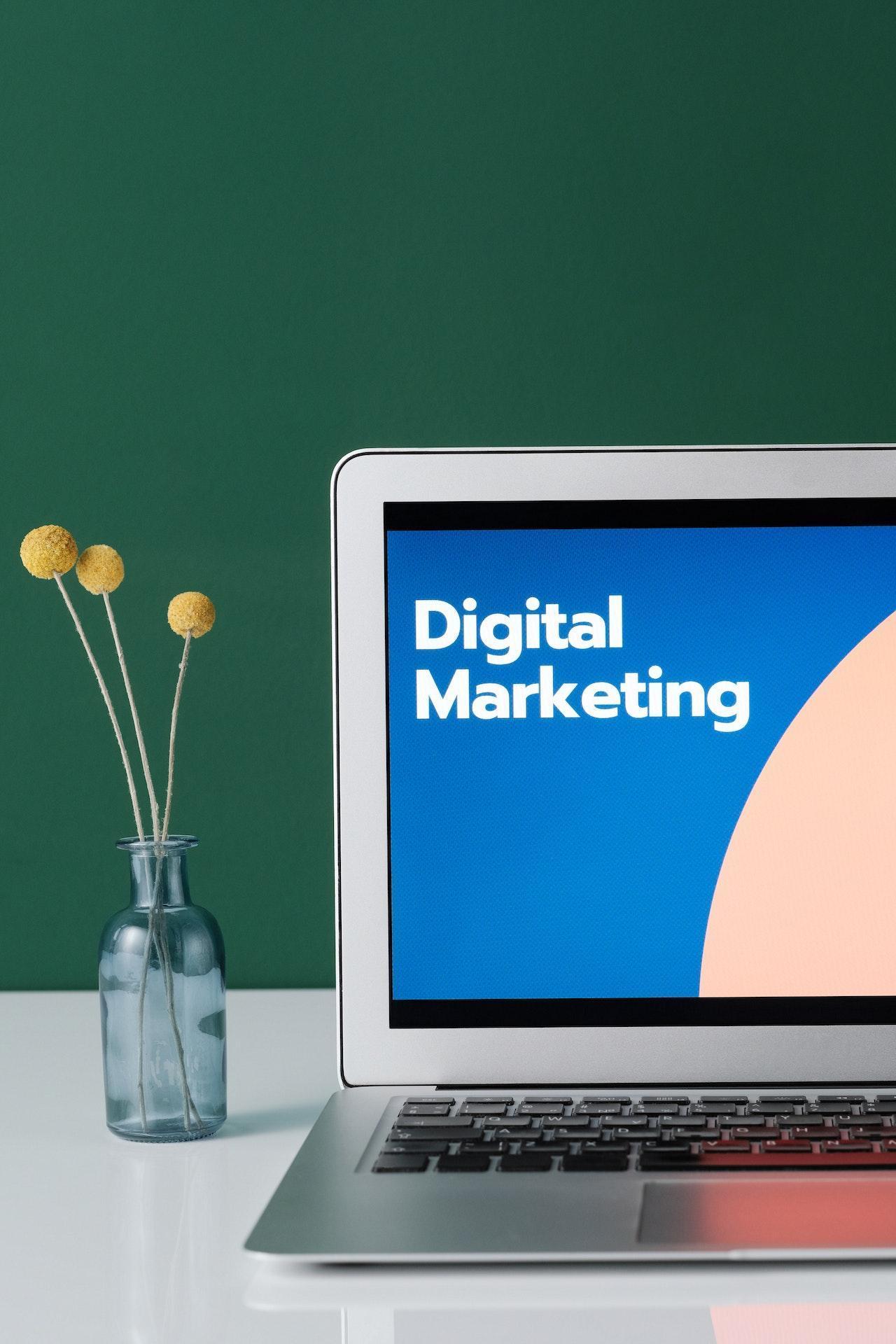 3 Ways to Adapt Your Marketing Strategy During Continued Inflation
3 Ways to Adapt Your Marketing Strategy During Continued Inflation
What does digital marketing during inflation have in common with a triathlon?
In both, you’re playing to your strengths, mitigating your weak points and budgeting your fuel or resources so that you can pull through.
Inflation, the general increase in prices and the decline of purchasing power, negatively affects marketing. Specifically, when there’s inflation, marketers are gun-shy about increasing their marketing spend since their customers are buying less.
However, contrary to this knee-jerk reflex of reducing marketing activity in the face of inflation, businesses should consider each inflationary period as a rich vein of innovation and creative marketing.
Going back to the triathlon analogy, you wouldn’t entirely take yourself out of the race. Instead, you would pace yourself until you reach your final sprint.
What we’re saying is that contrary to popular belief, inflationary periods, no matter how long, can still facilitate tremendous growth for your business.
The caveat is that you must optimize your digital marketing strategy to offer customers solutions for inflation-based challenges.
We’ll break down marketing strategies that can help you:
Consumers are unhappy when brands raise their prices because they see this as passing the cost burden onto them. Worse yet is shrinkflation, the quiet reduction of package sizes without lowering prices.
Reevaluating your product mix is a great way to make these cost savings on the product and marketing without burdening your customer.
What does this look like in practice?
Kraft Heinz exemplified the last tip by introducing a more expensive, chef-inspired line of sauces, the Heinz 57 Collection, to elevate their customers’ culinary experience.
Shifting focus towards a global marketing strategy can open up avenues for growth while your stronghold undergoes economic disruption and cannot yield the return you’re used to.
Marketing globally provides:
Lego, the toy company, is a stellar example of this. Lego limped into the 2008 financial crisis, mostly servicing the North American market, burdened with debt and an overloaded product portfolio.
When the toy manufacturer refocused on marketing their classic products in European and Asian markets, their sales rose by a third in 2009 despite the economic downturn.
With the reach of digital marketing, targeting the global market has never been easier.
Optimizing your marketing strategy globally isn’t so much about pushing new products; rather it’s repackaging your existing product for a new demographic.
Localization can be as nuanced as McDonald’s adding cultural foods to their menu or as simple as having your marketing copy translated as Starbucks does in the US and Canada.
One important thing to note about consumers in ongoing inflation is that they’re cautious about spending, not unwilling to buy.
Giving them an innovative product can entice them to shift their perspective of your brand from expendable expense to permissible treat or essential purchase.
Apple makes a case for investing in innovation as a way to secure market share. The tech giant released the iPod in 2001 and launched iTunes in 2003, soon after the Dot-com bubble burst. Apple released the iPhone in 2007 on the cusp of the Great Recession and followed that up with the iPad in 2009.
They then heavily marketed these products aspirationally through product placement. Shows and characters that people loved used Apple products, solidifying the association between Apple and status.
The lesson here is that even in an economic downturn, optimizing your product and marketing to the needs of the market can still yield growth.
What can small businesses do without million-dollar marketing budgets?
Inflation is inevitable and can be long-lasting. It will impact your customer’s buying power, but that doesn’t mean you should cut back on marketing.
An economic downturn is the perfect time to return to the drawing board. Focus on growing the market share of your strongest products that will make it to consumers’ essential list.
Cast your digital marketing net wide into underserved markets, which may yield the growth you need to weather ongoing inflation.
Lastly, tailor the products and the marketing to the customer's needs. They may be more cautious in spending, but this approach will land you in their must-haves.
Tags: Business Strategy, Innovation, Marketing
 5 Ways to Improve Your Social Media Presence... That Actually Work
5 Ways to Improve Your Social Media Presence... That Actually Work
Social media is both a science and an art. The art is the ethos and spirit of your brand. It’s your job to bring that to the table.
Today, I want to look at the more practical things you can include in your content marketing strategy to grow your social media presence.
We’re going to look at how SEO, consistency, authoritative content and getting offline can help you grow your social media channels.
Visibility is key to growing on social media. Search engines almost entirely control how visible your content is. One of the most common ways to make social media content searchable is to use hashtags.
That said, long gone are the days of flooding your post with generic hashtags in order to get traction and engagement.
The trick with hashtags is to narrow down the niche of the hashtag as much as possible.
The lower the volume of people using the hashtag, the more your content will show up in top searches and receive engagement.
What about optimizing for search engines?
No-one loves a self-obsessed person who can’t stop talking about themselves. This is a hidden pitfall for businesses on social media because you may genuinely feel you have tons of value to share about your business.
To avoid this risk, curate and share valuable content that is industry-adjacent and rouse the interests or answers the needs of your audience.
The best example of this is Nike. Of course, the sportswear giant shares posts about its products. However, they also create an overwhelming amount of digital content, amplifying the stories of athletes from all sports and walks of life.
Yes, we know Nike is probably endorsing some of these athletes, but it’s still refreshing for the product to take the back burner and to hear some inspirational human stories.
You may not have Nike’s blockbuster budget. What can you do to diversify your business’s social media content?
You never want your audience to think, “Oh! I had forgotten about this brand,” when your posts pop up on their feed.
If you haven’t already, put together an editorial calendar detailing posts, captions, and hashtags for each social media platform.
Planning your content on an editorial calendar will enable you to:
A calendar will help you avoid posting too much. This is such a key point to note, it deserved to be addressed separately. Posting too much can actually reduce engagement on your posts.
For instance, a HubSpot survey found that posting more frequently (twice a day) on Facebook only benefited pages with over 10,000 followers. For smaller pages, the posts got 60% more engagement when they went up once or twice a week rather than when posted daily.
To help you get the right cadence of posting on socials, here’s a little cheat sheet.
| Social Media Platform | Frequency of Posting |
| 1–2 times a day | |
| Instagram Posts and Reels | 4–7 times a week |
| 1–5 times a day | |
| 1–5 times a day | |
| TikTok, Stories | 1–3 times a day |
| YouTube | 1–3 times a week |
| Blog | 1–3 times a week |
In the content game, quality will always tramp quantity. So, focus your resources on ensuring that each piece of content is great instead of flooding the feed.
An adpocalypse is a colloquial internet word referring to advertisers boycotting a social media platform.
It happened to YouTube after ads ran on exploitative videos and it also hit Facebook after the “Stop Hate for Profit” campaign ran in 2020.
As a marketer relying heavily on Facebook or any other social media platform is boxing yourself into a corner.
To shore up this vulnerable side of social media, make sure you have a space online, your website, that is fast, well-designed, up to date, and optimized for mobile users.
Secondly, think about how your socials translate offline:
From my experience, I’ve found that I mentally divide social media platforms according to usage. For example, I’ll go to YouTube for tutorials but follow motivation coaches only on Instagram or TikTok.
What does this phenomenon have to do with your business’s social media?
Well, if your audience is in any way similar, they may only follow you on one platform.
For instance, you may have devoted YouTube subscribers who follow your channel uploads religiously, but don’t follow your other social media accounts.
The idea is to convert your existing followers on one platform who already believe in your brand into a loyal audience across all channels.
How do you do this?
If you take away only one thing today, it’s that consistency in branding, posting and providing value will get you before the right eyeballs every time. Remember to broaden your approach beyond your own offering and beyond the digital space.
Tags: Business Strategy, Digital Transformation, Marketing
 From Feedback to Fame: The Ultimate Guide to Harnessing Customer Reviews for Small Business Success
From Feedback to Fame: The Ultimate Guide to Harnessing Customer Reviews for Small Business Success
Let's face it: the Internet has drastically changed the way that we shop for everything from sneakers to carry out.
In fact, most people now start their searches online. And oftentimes, this includes scouring through reviews that others have publicly posted.
No billboard, online ad, or marketing strategy has as much credibility as the word-of-mouth of someone who has purchased a product or service.
For brands, customers posting positive reviews are real-life celebrities and influencers with the power to make - or break - their businesses. They offer authentic insight that no marketing campaign could even come close to.
At the end of the day, however, asking customers to spread the word is one thing... leveraging them is a different ball game altogether.
Here's everything you need to know about how to successfully cull reviews and use them to improve your brand presence, as well as what to do when the unthinkable happens and someone leaves you a less-than-stellar review.
Jay Baer notes, “It‘s good business to ask your customers to provide reviews, as long as it isn‘t too aggressive or a quid-pro-quo.”
That means finding ways to encourage people to post reviews voluntarily.
Here are a few strategic ways to start culling more reviews for your business:
Collecting customer reviews is only one step in the reputation management process, however. The real results come when potential new customers actually see these reviews.
Here are some of the most popular ways to ensure that your business's reviews are visible at the right place and the right time:
Unfortunately you can't please everyone, and you are likely going to get some bad reviews here and there.
First and foremost, when this happens, do NOT panic!
Businesses that have all 5-star reviews aren't seen as genuine or authentic, since it's impossible to be everything to everyone all the time.
Instead of getting upset and stressed out, welcome the criticism. Oftentimes, these types of situations can serve as learning opportunities for how to improve some specific aspect of your business.
When a not-so-stellar review comes in, it's imperative to do the following as quickly as possible:
Here are a few examples of how to respond to negative reviews that will hopefully get the creative juices flowing:
At the end of the day, most people want to feel valued and appreciated. Doing something as simple as calmly responding to a negative review can make a world of difference.
Customer reviews - both good and bad - are valuable for your business. The good ones will help you earn customer trust, and the bad ones will (hopefully) inspire you and your team to do better.
The best part is that they cost nothing, yet their dividends can be huge. In fact, most of your loyal customers will spread the word for free.
So, the next time you have a happy customer singing your praises, ask them if they would be willing to write a review about their experience. And if there's a little hesitation, try to "sweeten the pot" a little by offering some sort of incentive.
You'll be amazed at the end result.
Tags: Customer Experience, Digital Transformation, Marketing
 3 Proven Tips to Adapt Your Marketing Strategy for the Nagging Headache Called an Inflation
3 Proven Tips to Adapt Your Marketing Strategy for the Nagging Headache Called an Inflation
The Great Toilet Paper Panic of 2020 demonstrated how fragile our supply chains are and how vulnerable we are to disruptions. The biggest takeaway from global crises and inflation is that how brands respond to customer behavior determines who survives after the dust settles.
Inflation generally makes customers spend less, buy cheaper, and postpone non-essential purchases. The longer the inflation lasts, the more these habits are amplified. That said, consumers don’t have a blanket response to inflation.
While many consumers cut back, some make exceptions for discretionary purchases they consider affordable and morale-raising—think luxury perfume or staycations. Others, especially top earners, simply continue spending as usual.
Presented with this mixed bag of customers, how can marketers adapt their messaging and marketing strategies to meet the customers where they are?
It seems counterintuitive to maintain marketing and advertising during an economic downturn. In fact, many businesses deliberately slash marketing budgets first while funneling resources into production costs and short-term, measurable activations, such as digital and point-of-sale ads.
After all, aren't consumers spending less? Yes, but they also weigh their purchases more keenly and scrutinize brands.
The key to effective marketing during a recession is to lean more towards a long-term brand-building strategy rather than short-term activations. Since demand is lower during inflation, there’s more value in building brand awareness long-term than in pushing current sales.
What does a long-term brand-building strategy look like?
Create empathetic, reassuring messages around your brand that bolster your customer’s trust in your brand. One way to do this is to partner with or spotlight charities and causes that benefit the community. Show humanity, generosity and warmth.
For example, Coca-Cola spotlighted the contribution of frontline responders at the height of the Covid-19 pandemic in 2020. Their brand placement is subtle but reminds the consumer of the company’s commitment to the community.
Adidas tackled a global issue that the fashion industry contributes to—plastic waste. In May 2022, the sportswear giant launched the #RunForTheOceans campaign in partnership with a nonprofit environmental organization. The initiative targeted cleaning up the oceans one plastic bottle at a time for every 10 minutes run by individuals.
The brand aligned itself with a long-term message around sustainability, pulling customers into participating in the positive movement.
Spending on brand awareness protects your share of voice within the market. In some cases, it may be cheaper to advertise during inflation since many brands advertise less.
Tailor your marketing strategies to appeal to each customer segment your business serves.
You might serve conservative non-spenders and customers who are comfortably well-off and hardly change their spending habits in response to inflation. Your marketing strategy should address these differences.
The table below compares the different marketing strategies you would employ if you were marketing essential and discretionary products to various customer segments.
| Type Of Customer | Essential Product Marketing | Discretionary Product (Treats) Marketing |
| Conservative Non-spender | Emphasize lower prices in smaller packs, fighter brands and value products | Promote as a small indulgence that is well-earned |
| Resilient Cautious Spender | Promote bonus packs to encourage stockpiling | Promote the product as an affordable, morale-raising alternative to luxury |
| Comfortable Well-off Spender | Brand awareness advertising | Emphasize the quality of the product as an aspirational marker of success |
For example, Louis Vuitton's thousand-dollar bags are a discretionary item that the comfortably well-off would buy with no qualms. However, Louis Vuitton launched their keyring in 2009 to expand into the cautious buyer segment, which retailed at $300.
It was a signal to the customers with reduced purchasing power that there was a luxury option for their smaller budgets. When purchasing power was again on the uptick post-crisis, these customers bought bigger luxury items, increasing Louis Vuitton’s sales.
We’ve all experienced the freemium pricing model and how it nurtures us as consumers down the funnel to eventually purchase more product features. Spotify, Evernote, and Dropbox are a few companies offering this payment model.
As a marketer, you don’t want to lose market share while your consumers postpone their purchases. You want your product to be front and center in their minds, preferably in active use in their lives. This is where value bundles and the freemium model come in.
A freemium model allows you to give your customer a taste of the product while lowering the bar to entry for new users. The free tier opens your product to new consumers, while the paid tiers offer value to loyal and invested customers.
Once you’ve got your foot in the door, you can focus on highlighting the value of your product to these already interested customers. This is much more effective than spending that precious marketing budget on paid marketing campaigns and sales processes to gain leads.
Value packs or bundles offer the same benefit for products that can’t be offered in tiers. They lower the barrier to entry for your customers, making it easier for them to purchase a 2-for-1 bundle rather than a one-off.
A great example of leveraging price during an inflation period is Mailchimp. After the 2008 economic crash, when consumer spending was low, Mailchimp introduced the freemium model. After having been in business for nearly a decade, they had less than 100,000 paying subscribers. They also didn’t initially offer a free trial.
Introducing a free tier in 2009, with limited email accounts and a cap on daily emails, skyrocketed their users to 290,000 in seven months. Even though users started on the free tier, getting on the paid tier was an achievement showing the growth of their own businesses. Mailchimp has continued this model, growing its annual subscription revenue to $800 million in 2023.
Ensure the free tier is enticing enough to get customers on board but basic enough that they’ll eventually need to level up to paid tiers.
Secondly, work with the customers' needs in mind. Mailchimp responded to the needs of their small-business-owner clientele, who badly needed the email subscription service but could not support the cost because of the recession. The service-oriented offering paid off.
The bigger the product portfolio, the more it will cost to market these products successfully. Focus on promoting products with a higher perceived value to your customer base.
Consumers often cut back on household spending by buying less or cheaper options for their staple products.
Paradoxically, the uncertainty of inflation also makes consumers feel entitled to small, affordable treats that are emotionally uplifting—otherwise known as “the lipstick effect.”
As a marketer, you want to tap into this and strengthen the customer’s loyalty to the brand.
As a marketer, you can’t afford to take a back seat during inflation. You need to be proactive in tackling your consumer’s purchasing behavior.
The bare minimum is to protect your share of voice through long-term, brand-building marketing. Additionally, market various price points to the various customer segments to give them easy access to your products.
Lastly, stay ahead of the curve by curating a strong product mix that meets your customers wherever they are during these challenging times.
Tags: Business Strategy, Customer Experience, Marketing
 Yes, Google CAN Detect AI-Driven Content. Here’s How.
Yes, Google CAN Detect AI-Driven Content. Here’s How.
Content has always been at the center of Google’s ranking algorithms. Low-quality and over-optimized content can lead to penalties for websites. Conversely, relevant, informative, and valuable pieces can propel them to the top of organic search rankings. While this rule of thumb has been around for decades, Artificial Intelligence (AI) has brought a reality check for webmasters and creators.
Suddenly, there’s a new way to create organic content for websites, blog posts, social media, and whitepapers… all within a matter of minutes.
The initial AI rush seemed to end the roles of content marketers. As the dust settles, however, things don’t appear as drastic as they initially did.
The big question at this point is whether Google can recognize AI content and penalize websites for it.
Before answering this question, let’s dig a little deeper into AI content and explore how it has disrupted the digital landscape.
The launch of ChatGPT in November 2022 was a game-changer for online marketers. The platform gained millions of users at a dizzying rate and showed an immense amount of power from the outset. In fact, a recent survey found that almost half of all business leaders are considering how to integrate AI into their overarching business operations.
One of the key uses of AI tools for businesses is creating content for websites, long-form blogs, social media posts, and other marketing materials. Besides quickly churning out content, AI tools can also generate images and even flesh out details for new business ideas. These tools are great from a marketing perspective, but the content they generate is far from perfect and lacks the psychological perspectives that only a real-life human being is able to encapsulate.
Since content has always been the cornerstone of Google’s algorithms, the search engine was quick to rework its guidelines after AI began to spread like wildfire. According to the latest Webmaster Guidelines, Google may penalize auto-generated content if it was written with the intent to manipulate search rankings, which in turn, would provide a poor end-user experience.
Some examples of AI content that could face potential penalties in the not-so-distant future include articles and web copy that:
OK, so now that we’ve covered the foundational basics of AI content, let’s try to answer the million-dollar question of the day:
Can Google tell the difference between machine-written content and content written by an actual person?
Unfortunately, at least as of the time this article was written (July 2023), there is no straightforward yes or no answer to this question.
This is a complex topic to try and tackle since content generated by the previous natural language generation (NLG) models (a software process that produces natural language using structured and unstructured data) is more likely to be labeled as AI content than pieces generated by more current - and advanced - AI tools. The latest tool versions, such as GPT-4, are acclaimed for their resemblance to human behavior.
Before you get too far ahead of yourself, and think that AI content writing tools are the holy grail of your content marketing efforts moving forward, be forewarned: Google's bots will likely keep pace with AI tools, even as they improve over time. You cannot expect to delude them for the long haul because they will surely detect shortcuts sooner or later.
There are no shortcuts to creating Google-friendly content, regardless of whether you use AI tools or write everything yourself. At the end of the day, you need to produce relevant, informative, and useful content that offers trustworthy information to users.
Here are the qualities Google looks for when it comes to determining content quality and relevance.
E-E-A-T (Experience, Expertise, Authoritativeness, and Trustworthiness)
In certain niches, Google prioritizes content impacting the personal finances, health, safety, and happiness of the end reader. This applies to web pages and websites in industries such as:
AI tools can't provide valuable insights on Your Money or Your Life (YMYL) topics, since the content produced won't match user expectations.
At the end of the day, AI simply cannot demonstrate experience, expertise, authority, or trustworthiness. And using them to create content could potentially result in a penalty that affects the ranking of the website down the road.
Generating content with AI tools is an attractive proposition for marketers and business owners as it can save a tremendous amount of time and money.
It’s a balancing act, however, since you need to identify what Google’s“sweet spot” is in terms of how the algorithms currently work so that you are “playing nicely in the sandbox.”
Here are a few tips that should help:
Google’s ranking algorithms follow a continuous improvement approach, as the search engine constantly implements measures to counter the lack of authenticity, usability, and value in content. For this reason, marketers need to track changes and realign their content strategy every time the algorithm changes.
In a nutshell, if you want to use AI to generate content, you need to be responsible. Remember that AI tools are good assistants, but bad masters.
AI writing tools can significantly enhance your content creation process, from ideation and research to a polished end deliverable that even the most advanced copywriters would be in awe of.
But you cannot get complacent or lazy simply because you have a tool that is doing a lot of the heavy lifting for you. You must use AI responsibly if you plan on staying on the up-and-up with Google’s algorithm.
At the end of the day, the safest way to use AI content is as an enhancement, as opposed to a total replacement of skilled copywriters and content writers.
Tags: AI, Digital Transformation, IoT
 The Top 3 Reasons You Should Be Using Chatbots for Sales and Marketing
The Top 3 Reasons You Should Be Using Chatbots for Sales and Marketing
When you mention chatbots, the first thing that springs to mind is effective customer service. Waiting to get service has always been irksome, but with the growth of eCommerce customers have come to expect 24/7 connectivity and assistance—hence the need for chatbots.
In fact, according to a Userlike survey, customers’ favorite things about chatbots is their quick response and availability outside normal working hours.
Customer service aside, did you know that chatbots can benefit your business beyond improving customer satisfaction?
Specifically, I want to get into how chatbots can help your business implement your sales and marketing strategy.
Over 50% of executives agree that bots deliver significant return on investment and improve customer acquisition and retention
How can chatbots supplement your daily activities to reach, engage, and convert target prospects into profitable customers?
Picture landing on a website. Instead of an annoying spammy pop-up asking for your precious email address, you get a conversational chat bubble welcoming you and offering to help you find the information you need.
Check out the engaging example below.
Lead generation is identifying people who may be interested in buying your product, capturing their interest and engaging with them.
In this initial phase of the buyer’s journey, information is what they’re after. Providing information on your product and pricing is straightforward and therefore perfect for automation.
You don’t really need the human input at this stage. But you can simulate human conversation with conversational chatbots.
According to HubSpot, only 19% of customers just learning about a product or service (awareness stage) will want to speak to a sales rep. The number triples to 60% when customers have researched, have more information and built a shortlist (consideration stage).
Therefore, it makes sense to use bots as a touchpoint in the customer’s journey and to enhance marketing communication and to help sales teams get in touch with customers more efficiently.
Automating the initial engagement with new or returning users browsing your site through chatbots will enable you to:
Upselling is persuading your customer to buy an additional item to what they’re purchasing or to purchase a more expensive product or service. For example:
Add $150 to upgrade your tablet from 64GB to 256GB.
On the other hand, cross-selling is identifying complementary products based on your customer’s interests or purchases. For example:
Get a stylus and bluetooth keyboard with your tablet.
Chatbots can tackle both upselling and crosselling to bump up the sales and revenue in your business.
You may be wondering, why don’t I just put my sales reps on the job of upselling and cross-selling?
Chatbots do the job better because they:
A great example is Levi’s chatbot that casually suggests the customer browse promos and upsells the stylist service which is an additional $3-$12 per order. It presents the options with no pressure to the customer.
So your bots have been working hard and managed to generate leads and convert them into buying customers or at least collected their name and email. Now what?
The best customer is the one you’ve already got. That’s why it’s essential to nurture your customers even after they’ve given you their hard-earned money or committed to your brand by sharing information that you can track.
Chatbots can enhance your remarketing strategy by:
According to a Mckinsey survey, nearly 60% of customers value and expect businesses to follow up with them post-purchase and to send timely communications tied to key purchasing moments or decisions. Automating after-sales follow up can supercharge revenue.
Let’s finish up with an aspect of follow-up that is not quite after sales but addresses abandoned carts.
We’ve all experienced it. Stopping mid-purchase because you were buying a gift and you needed to confirm one more detail or maybe you want to watch that demo video one more time just to be sure you’re getting the right product.
Your customers are doing the same and letting that line go slack is losing tons of business.
Marketers found that retargeting has 100% better ROI than text or display ads. So, program your chatbot to analyze those abandoned shopping carts and send prompts to your customers who are just waiting for a nudge in the right direction.
To sum it up, we’re not replacing your skilled sales and marketing teams with bots.
Rather, chatbots will automate parts of the sales journey such as lead generation and conversion, upselling, remarketing and sales follow-up leaving your people to do what they do best.
Tags: Customer Experience, Marketing, Sales
 A Foolproof Guide to the Role of Colors in Generational Marketing
A Foolproof Guide to the Role of Colors in Generational Marketing
Meta Description - Learn color preferences across the different generations and how to use them to better connect with your audience.
Your brand color can make or break your marketing campaigns. Yes, your customers make buying decisions based on your brand's color(s). This is not a conscious decision but is based on a simple concept called color psychology.
Different colors create different emotions, perceptions, and behaviors from individuals. For example, blue instills trust and reliability and is often viewed as a calm and analytical color. Red, on the other hand, elicits feelings of excitement, passion and energy.
The right color choice will create the right emotions before they read or hear the ad’s content, regardless of whether it’s a physical or digital product.
What’s more, recent studies have found that different generations react very differently to various color choices. It’s vital to use the right colors for the right audience.
Whether you are targeting Baby Boomers, Millennials, or Gen Zs, this article explores the subtle nuances of color so that you can connect with your target audience on a much deeper level.
Baby Boomers, also known as "Boomers," were born between 1946 and 1964. This generation of consumers prefers more traditional colors when making their purchasing decisions.
According to NASDAQ, Baby Boomers own almost 50% of the United States' wealth, a market that most businesses — perhaps yours included — cannot afford to ignore.
Baby boomers have an eye for muted and calm earthy tones like:
So, why do psychologists think Baby Boomers prefer these muted neutral colors?
Because they are traditionally associated with comfort, stability, and reliability, all of which are values that Baby Boomers hold near and dear to their hearts.
Incorporating these colors in your marketing materials will create a sense of familiarity and comfort, increasing the likelihood of your messaging tapping into their emotions and inner psyche.
Fashion influencers and brands leverage this with the “old money” trend. The internet is currently littered with outfit inspirations, all in neutral and earthy tones that give off a vibe that resonates with the Boomers.
The Generation X age set falls between 1965 and 1980; statistically, they own around 30% of American wealth, which means they have significant purchasing power.
This generation is closely related to the Boomers, but we see some additions of brighter nature-centric hues, like
Generally, opt for brighter versions of natural colors when designing your marketing materials, as they appeal to this generation of consumers.
These vibrant colors capture Gen Xers' attention as they create an atmosphere of excitement and energy. You will notice a significant increase in the engagement you will receive from this generation.
Millennials are a more recent age set; their birth dates fall between 1981 and 1996, and they own around 8.5% of the US wealth. This may seem little until you realize it’s about $13.3 trillion.
For this generation, we see a more drastic change in the color preferences. Millennials have proven to have an eye for bright and energetic colors, colors that portray a sense of positivity. The generation even has an unofficial trademark color, “The Millenial Pink.”
But while they enjoy bright colors like
They tend to use them as highlights and have cooler colors as the base color. Such base colors include:
When tailoring your marketing strategies for this generation, use energetic and bright colors.
Take, for instance, Apple and Nike, whose target consumer base is mainly millennials. You will notice that Apple and Nike's products have various color options that satisfy Millennial preferences.
Generation Z comprises people whose birth dates fall between 1997 and 2012. These consumers seem objectively young and currently have the lowest purchasing power, so why should your business target them?
Forbes projecs that Gen-Z'ers income is expected to hit $33 trillion by 2030, which would represent around 27% of the world's income.
This is a significant reason why most businesses base their marketing strategies on this generation: they truly are the future.
We see a significant shift in the color choices for GenZ’ers, with all the bright, vibrant, and contrasting colors coming into play, giving off the feeling of joy and excitement.
Today’s generational marketing tends to merge Gen Z’ers and millennials because of their similar love for brighter hues like
Each generation has specific color preferences, from Baby Boomers to Gen Z. Customizing your marketing materials with the right colors is essential for connecting with your audience. It influences emotions and decisions.
So, always consider the appropriate colors for your target audience - whether in packaging, websites, social media posts, or products - if you really want to enhance your marketing strategy effectively.
Tags: Design, Marketing, Personal Branding
 Yes, Google CAN Detect AI-Driven Content. Here’s How.
Yes, Google CAN Detect AI-Driven Content. Here’s How.
Content has always been at the center of Google’s ranking algorithms. Low-quality and over-optimized content can lead to penalties for websites. Conversely, relevant, informative, and valuable pieces can propel them to the top of organic search rankings. While this rule of thumb has been around for decades, Artificial Intelligence (AI) has brought a reality check for webmasters and creators.
Suddenly, there’s a new way to create organic content for websites, blog posts, social media, and whitepapers… all within a matter of minutes.
The initial AI rush seemed to end the roles of content marketers. As the dust settles, however, things don’t appear as drastic as they initially did.
The big question at this point is whether Google can recognize AI content and penalize websites for it.
Before answering this question, let’s dig a little deeper into AI content and explore how it has disrupted the digital landscape.
The launch of ChatGPT in November 2022 was a game-changer for online marketers. The platform gained millions of users at a dizzying rate and showed an immense amount of power from the outset. In fact, a recent survey found that almost half of all business leaders are considering how to integrate AI into their overarching business operations.
One of the key uses of AI tools for businesses is creating content for websites, long-form blogs, social media posts, and other marketing materials. Besides quickly churning out content, AI tools can also generate images and even flesh out details for new business ideas. These tools are great from a marketing perspective, but the content they generate is far from perfect and lacks the psychological perspectives that only a real live human being is able to encapsulate.
Since content has always been the cornerstone of Google’s algorithms, the search engine was quick to rework its guidelines after AI began to spread like wildfire. According to the latest Webmaster Guidelines, Google may penalize auto-generated content if it was written with the intent to manipulate search rankings, which in turn, would provide a poor end-user experience.
Some examples of AI content that could face potential penalties in the not-so-distant future include articles and web copy that:
OK, so now that we’ve covered the foundational basics of AI content, let’s try to answer the million-dollar question of the day:
Can Google tell the difference between machine-written content and content written by an actual person?
Unfortunately, at least as of the time this article was written (July 2023), there is no straightforward yes or no answer to this question.
This is a complex topic to try and tackle since content generated by the previous natural language generation (NLG) models (a software process that produces natural language using structured and unstructured data) is more likely to be labeled as AI content than pieces generated by more current - and advanced - AI tools. The latest tool versions, such as GPT-4, are acclaimed for their resemblance to human behavior.
Before you get too far ahead of yourself, and think that AI content writing tools are the holy grail of your content marketing efforts moving forward, be forewarned: Google's bots will likely keep pace with AI tools, even as they improve over time. You cannot expect to delude them for the long haul because they will surely detect shortcuts sooner or later.
There are no shortcuts to creating Google-friendly content, regardless of whether you use AI tools or write everything yourself. At the end of the day, you need to produce relevant, informative, and useful content that offers trustworthy information to users.
Here are the qualities Google looks for when it comes to determining content quality and relevance.
E-E-A-T (Experience, Expertise, Authoritativeness, and Trustworthiness)
In certain niches, Google prioritizes content impacting the personal finances, health, safety, and happiness of the end reader. This applies to web pages and websites in industries such as:
AI tools can't provide valuable insights on Your Money or Your Life (YMYL) topics, since the content produced won't match user expectations.
At the end of the day, AI simply cannot demonstrate experience, expertise, authority, or trustworthiness. And using them to create content could potentially result in a penalty that affects the ranking of the website down the road.
Generating content with AI tools is an attractive proposition for marketers and business owners as it can save a tremendous amount of time and money.
It’s a balancing act, however, since you need to identify what Google’s“sweet spot” is in terms of how the algorithms currently work so that you are “playing nicely in the sandbox.”
Here are a few tips that should help:
Google’s ranking algorithms follow a continuous improvement approach, as the search engine constantly implements measures to counter the lack of authenticity, usability, and value in content. For this reason, marketers need to track changes and realign their content strategy every time the algorithm changes.
In a nutshell, if you want to use AI to generate content, you need to be responsible. Remember that AI tools are good assistants, but bad masters.
AI writing tools can significantly enhance your content creation process, from ideation and research to a polished end deliverable that even the most advanced copywriters would be in awe of.
But you cannot get complacent or lazy simply because you have a tool that is doing a lot of the heavy lifting for you. You must use AI responsibly if you plan on staying on the up-and-up with Google’s algorithm.
At the end of the day, the safest way to use AI content is as an enhancement, as opposed to a total replacement of skilled copywriters and content writers.
Tags: AI, AR/VR, Emerging Technology
 Why Your Business Needs a Content Calendar
Why Your Business Needs a Content Calendar
Social media can sometimes feel like a shot in the dark for local business owners - believe us, we know. Although content marketing sometimes feels overwhelming, it is one of the most accessible tools for local businesses to promote products and services to an online audience.
Nowadays, people are more likely than ever before to find your business through social media channels. So, before they even see your website, they’re experiencing your brand on social media. Think of your content marketing as a virtual storefront for your business, giving your customers an online experience of your local storefront.
But in addition to running a business, the upkeep of a virtual storefront can be just as exhausting. The time, resources, mental willpower, to do content marketing can take up a big portion of your day, every day. But wait… There is a solution!
Developing a content calendar to implement your content strategy will completely revolutionize your approach to online marketing.
Your content includes anything from images, videos, stories, emails, blogs, and ads that you share online to build your virtual storefront. A content calendar takes all these essential elements of your engagement and transforms them into a calendar that tells you what to share, when to share it and where you will share it for your business.
A typical content calendar will assess a two to six-month overview of your content and develop a strategic implementation of the content to make your life easier. A content calendar will become a central tool in your marketing tool kit when it's done right.
Attracting customers is essential to successfully operating any local business, whether you run a restaurant, pet shop, or novelty comic bookstore. A content calendar can revolutionize your content marketing, saving you time, effort, money, and willpower.
Now, a content calendar may sound like a lot of time and effort that you don’t have to invest at this moment. But it actually makes creating content more straightforward while increasing the effectiveness of your outreach.
There are, of course, many benefits to local businesses creating and using content plans, so let’s find out more.
Struggling to brainstorm ideas? Use SEMrush to spy on your competitors. The tool offers a wealth of other content-generating ideas, but sometimes it's easiest to garner inspiration from other businesses in your niche.
Of course, don’t go and steal their content word for word. But when you’re struggling for ideas on ways you can engage the same audience there’s nothing wrong with using the same strategies if they work.
With a good content calendar that has thought out every detail beforehand, it is so much easier to consistently post good content because the thinking is already done for you. In a small business, you’re likely acting as the HR manager, the face of the business, the IT guy, and the marketing guru every single day. Having one less job to do on a daily basis is a massive plus in making a local business thrive.
There are a number of automation tools. Hootsuite is one of these useful marketing tools that can automate across several platforms. And it also comes with a built-in monitoring feature that enables you to monitor stats across platforms. Social Pilot, ContentStudio and BuzzSumo are other great tools to consider using to automate your content planner.
Now that you know the what, let’s jump into the how of creating a content calendar. Here’s a general guideline for figuring out what works the best for your business.
First things first, give your content a once over and audit everything. You can see your audience, what campaigns and posts are your best performers, and where there are gaps in your content strategy.
Your next step is to define goals from the information you gathered. Do you want to produce new leads? Direct readers to your website? Grow your number of Facebook followers? Setting out with a goal to work backward from will help you brainstorm better content more efficiently and quickly.
Next, you are going to create a template for your content calendar. Google Sheets is a free and straightforward tool to use. You’re going to decide on blog posts, social media platforms, and other forms of engagement that work well for your local business.
Don’t like the idea of using Google Sheets? HubSpot offers a free downloadable template for excel that will make planning your content planner smooth and breezy. Trello is a content planning platform that offers a free option to help you content plan like the boss you are.
It can be easier to develop a content calendar for one to two months to work out any bugs and keep on improving. With the important dates penciled in, fill in the gaps with a mixture of content that creates consistency for your small business.
Feeling a bit stretched thin to fill in all the gaps? Schedule in evergreen and prior content that is still relevant to your business. Unleash your creativity and invest some time into building your virtual storefront.
Facebook’s (now Meta) resources section has free and accessible resources that lay out all the aspects of planning and setting up a great content calendar in spectacular details. Go check it out!
By utilizing some of the strategies and resources mentioned in this article you will save time, money, and effort by developing a content calendar that works for your local business. This will be a game-changer for local business owners who are doing content marketing in-house.
So, what are you waiting for? Instead of just shooting from the hip each week on social media, it's time to implement a content calendar to ensure you’re reaching and engaging with as much of your audience as you can.
Tags: Business Strategy, Management, Marketing
 What Is a Lead Generation Funnel and Why Your Business Needs One
What Is a Lead Generation Funnel and Why Your Business Needs One
But they are also unreliable and unpredictable. To establish and maintain a successful business, you must be consistently finding and nurturing new leads. Word of mouth, networking, and similar marketing efforts can bring in a lot of revenue.
This may sound overwhelming. As a business without a massive marketing department, you don’t have the time and manpower to develop complex systems of advertising and marketing campaigns. Where do you even begin? Start small. Begin by refining your lead generation funnel.
A lead generation funnel provides direction and purpose for your marketing. To bring in more leads and close more sales. It’s called a funnel because the first stage captures the attention of a broad audience, and this marketing becomes more refined and detailed in the following stages. Here are the four main stages of a lead generation funnel.
To develop a successful lead generation funnel, begin by keeping the funnel full of fresh leads. You can do this by developing a great free offer in exchange for a prospect’s contact information. Which you then use in future marketing. This is how you keep your lead funnel full.
A great offer begins with an irresistible hook. Identify the problem your clients want to solve. Consider what they may ask Google or research in their search to solve their problem. Then, use that search to create a valuable free download. Here are a few examples:
So you have a great hook, something your audience finds value in, and now it’s time for you to create your landing page to generate opt-ins. This landing page should be visually attractive, easy to read, and entice your leads to enter their information in exchange for your free gift.
Once you have your offer and landing page ready, it’s time to get as many eyes as you can on that page. Organically, you can use your social media to address the problems your followers have and send them to the link in your bio as the solution.
To generate even more leads, use targeted paid advertising to lead people to your landing page. Use Google ads to target people asking the question your offer answers. Use Facebook advertising to target users who fit your ideal customer. The more targeted people who visit your landing page, the more leads enter your funnel, and the more sales you can close.
This is how you create an ever-flowing lead generation funnel. If you stop here, you have a collection of leads at the top of a funnel but no movement down the funnel. You have only leads. Leads are not sales. Leads are only the beginning. From here, you need to nurture these leads in your email marketing campaign.
Nurturing your leads requires you to deepen your relationship with them step by step. Refer to the previously covered lead generation funnel stages. The leads in your funnel now are already within the awareness stage.
To carry leads through the engagement stage with your email marketing, build rapport with them. On average it takes 7 “touches” before someone will commit to a purchase. Continue to demonstrate your expertise with emails that compliment your lead magnet like “How to Choose the Right Mattress.” or “Your Perfect Workout Awaits!”
The conversion stage seals the deal. Promote a special offer through your email sequence or social media. If you’ve done the previous stages right, you’ve got a great chance of gaining a new customer and potential referral machine.
Sometimes it can be challenging to know which campaign will be more effective. Everything from your headlines, copy, calls to action, and design all play a role in how well your campaign converts. Run A/B tests to gauge which design or hook works better. Customize your campaigns to match how far along your lead is in the funnel. The longer someone has been in your funnel and the more they have clicked on your emails, the warmer they are. The closer they are to making a purchase. Target these warmer leads with conversion-heavy content to seal the deal. Always be testing and refining your strategy.
Want help developing a strategy that fits the needs of your business and helps you increase your revenue with a steady flow of new leads? Connect with us today about creating your very own custom lead generation funnel for your business and start seeing results within days!
Tags: Business Strategy, Marketing, Sales
 14 Ways You Can Boost Your Conversion Rates… Starting Today
14 Ways You Can Boost Your Conversion Rates… Starting Today
As a business owner, you want to do everything in your power to increase your conversion rates. After all, more conversions mean more money in your pocket. Not only that, but they also lead to more customers and an increase in brand awareness.
This article will discuss 14 ways to boost your conversion rates to generate more revenue for your business. These strategies are easy to apply and don’t require a lot of time or expertise. So, let’s get to work!
When it comes to conversion rates, appearances matter. If your website looks outdated or lacks visuals, potential customers are likely to click away without taking any action.
To keep people engaged, make sure that your website is visually appealing and easy on the eyes. Use high-quality images and videos and pay attention to the overall design of your site.
If you want to take things a step further, consider using animation or interactive elements on your website. Just be careful not to go overboard.
Your call-to-action (CTA) is one of the most important elements of your website. After all, it’s what tells visitors what you want them to do next. If your CTA is unclear or buried on your page, people are likely to move on without taking any action.
To increase conversions, make sure that your CTA is clear, concise, and easy to find. Use actionable language that tells visitors exactly what you want them to do, and make sure the button or link is visible and easy to click on. You might also want to consider using a CTA that stands out from the rest of your page – for example, by using a different color or making it larger.
If you want to appeal to a local audience, make sure your content is localized. This means including things like your city or state in your headlines, using images of local landmarks, and mentioning local events. You can also use geo-targeting to show different content to people in other locations.
By keeping your content local, you can make your website more relevant to the people visiting it. You may also have improved performance in local searches.
One of the most effective tools is to show prospects that other customers have had a good experience with your product or service. In fact, over 90% of customers read testimonials before making a purchase.
You can do this by using testimonials from satisfied customers on your website. Make sure to include the customer’s name, location, and photo if possible.
In today’s world, people expect to get quick assistance when they need it. If you want to increase conversions, offer live customer support on your website through a chat window or by providing a phone number. According to Zendesk, 85% of surveyed customers are satisfied with live chat support, and 91% with phone support.
By offering live customer support, you can answer any questions that potential customers have and make them feel confident doing business with you.
If you have a list of email addresses from past customers, let them know about any promotions or sales that you’re currently running. This is a great way to increase conversions because it allows you to reach out to people already interested in what you have to offer.
To make things even easier, you can set up an automated email campaign that will send out messages to your list on a regular basis.
A customer has a problem and needs a solution to their problem – That is sales simplified. When it comes to conversion rates, simplicity is key. If your website or products/services are too complicated, people will likely give up and go elsewhere. So make sure your customer can easily navigate your website to find the information they are searching for.
Use straightforward language and avoid using too much technical jargon.
A/B testing is a hands-on tactic for increasing conversions by testing different versions of your website or product. You can conduct A/B testing by creating two versions of your site and then seeing which one performs better.
Additionally, you could use A/B testing to test different elements of your website, such as your CTA or your pricing page. By testing different versions, you can find the best combination for your business.
Now, millions of people use their mobile devices to access the internet. Therefore, if you want to increase conversions, make sure that your website is optimized for mobile.
This means safeguarding that your site is responsive and easy to use on a mobile device. You should also consider using a mobile-specific CTA, such as a click-to-call button.
Slow load times can be a major issue when it comes to conversion rates. If your website takes too long to load, people are likely to give up and go elsewhere.
Make your website well-designed and optimized for speed to avoid slow load times. If possible, utilize a content delivery network (CDN) to improve your site’s load time.
Google Analytics is a free tool designed to track your website’s traffic and conversion rates. By setting up Google Analytics, you can see how people find your site and what they’re doing once they get there.
You can use this information to improve your website and increase conversions. If you’re not already using Google Analytics, now is the time to start.
One of the best methods for attracting customers and conversions is to improve your content. This means creating high-quality, informative, and engaging content that will appeal to your target audience.
To improve your content, start by doing keyword research to find the right keywords to target. Then, create content that is interesting and relevant to your audience. Finally, promote your content through social media and other channels.
Social proof is an influential tool that can be used to increase conversions. This refers to the idea that people are more likely to do something if they see that others are doing it as well.
You can use social media or good reviews to create a buzz around your product or service.
People are more likely to convert if given an incentive. This could be a discount, a free trial, or something of value to your target customer.
Incentives are a great way to increase conversions, and the incentive should be relevant to your product or service. Otherwise, you could end up losing money.
These are just some of the tools and methods you can use to boost your conversion rates. By implementing these strategies, you can generate more revenue for your business while also providing a better experience for your customers.
If you’re unsure where to begin, start small and go down the list as you see results. Remember, your goal is to increase conversions, not just traffic.
Tags: Marketing, Business Strategy
 10 Post Ideas Guaranteed to Boost Engagement on Facebook and Instagram
10 Post Ideas Guaranteed to Boost Engagement on Facebook and Instagram
As a small business owner, you tend to wear a lot of hats throughout the day, but one of the most neglected hats tends to be the Social Media Manager hat.
But that’s no surprise. Running a business takes time, energy, and a lot of brain power. Coming up with engaging ideas to post on social media may not be as much of a priority as making sure your sales, and other essential business matters are in order.
But don’t worry! If you're looking for tried and true tested ideas to engage your audience, you have come to the right place.
Here are 10 ideas that will save you time and help you boost your engagement with your audience on social media we know work.
Famous Quotes
Quotes are an easy way to boost engagement on social media, especially on Facebook and Instagram. You can use quotes from influential people or other people for your business (in-house or customers). While you can create your quotes with a photo editor, you can also use websites such as Canva, which has template options for quotes that can easily be downloaded and shared on social media.
User-Generated Content
Posting user-generated content (UGC) is a great way to show your audience how to use your product or service. UGC can be photos, videos, reviews, and more. Anything created by users is going to be great content. Social media users tend to trust the opinions shared by their peers more than those published by brands. Best of all user-generated content is free!
Live video
Posting a live video is an incredible way to grab engagement. The average organic reach of a Facebook live video is six times higher than that of a regular post. This makes sense, as it's the closest alternative to actually watching TV.
Live streaming allows businesses to connect with customers on a more personal level. When potential customers attend your live sessions, it's almost as if you're inviting them to your business to get to know them and unlike a real conference hall, where just a few people can sit in the front row, live streaming allows anyone to sit in the front row.
Memes and GIFs
We all love a good meme or GIF, and these are great ways of bringing humor into your social media marketing. If a meme has gone viral recently, you can use it in a post if it's relevant to your brand. You'll join the conversation and enjoy what everyone's talking about — which can go viral too!
Milestone Posts
Every business has milestones. Heck, every person has milestones. And these personal or business achievements are worth celebrating in the form of a Milestone Post. Milestone posts examples include the achievements of you or your company, such as anniversaries, new employees, new offices, etc. Pat yourself on the back and always let your fans know about it. This will also help humanize your brand and humanize you if you're the face of your company.
Educational Guides
Educational guides and how-to’s are a great way to boost engagement on Facebook and Instagram. They build trust between your company and your followers, but they also provide helpful information in a format that's easy to consume.
You can create educational guides and how-to posts for any topic that aligns with your brand. For example, if you run a bookkeeping service, you can write about how to calculate the total value of inventory assets or how to manage the accounts payable process. If you sell fitness equipment, you can write about performing joint exercises using your products or share tips for achieving specific fitness goals.
Contests and Giveaways
Contests and giveaways are very effective ways to boost engagement on social media. And there are no rules that say you have to give away something expensive. Your goal is to engage them with your brand, so be creative with your contests.
Encourage the people who enter your contest to share it with their friends and family. This will help promote your business and reach more people interested in joining the contest who may have never heard of your business.
Questions to Your Customers and Followers
Curious about what your followers want? Ask them! Encourage people to ask questions about your products, brand, or even how their day is going. This is an easy way to get insight into what people think about your business and what they want to see more of. This post type is also great for generating engagement because it's so simple to participate in. Creating a quiz is also a great way to boost engagement because people love the opportunity to post their opinions on just about anything!
Before-and-After Posts
There are dozens of different before and after posts that receive massive engagement on Instagram and Facebook. Consider showing the benefits of your product or service through a before-and-after post. You don't have to be a cosmetic company to make this work. Businesses like carpet cleaners, landscapers, auto repair shops, and more can also use this technique to show customers what their companies can do for them.
How-to Videos
Post video tutorials on how to do just about anything. Even if the skill is something your followers already know how to do, they may be interested in learning a new approach or technique. Not sure which skills would be interesting? Ask your audience what they'd like to learn how to do. It's a wonderful way to start a conversation and find out more about their needs.
Final Thoughts
The key to creating great content is to be consistent. The goal is to develop a community around your brand while creating a personal connection with your audience. By creating engaging, genuine content on Facebook and Instagram, you can build a community of customers genuinely interested in what your business offers.
Tags: Customer Loyalty, Marketing, Social
 3 Offline Marketing Strategies That Will Drive Customers Right to Your Front Door
3 Offline Marketing Strategies That Will Drive Customers Right to Your Front Door
Sometimes, local businesses need to think out of the proverbial box when it comes to marketing strategies to drive sales and increase brand awareness. And while widely useful, online marketing isn’t always the answer to creating the connections that local businesses need to leverage sales and develop that all-important brand awareness in local communities.
In contrast, offline marketing can still attract new customers who will walk through the front door of your business tomorrow and buy your products and services.
arketing has become an out-of-the-box way to increase brand awareness in a world where online marketing is the norm. Every local business can make use of online marketing, but offline strategies can be your “Ace in the Hole” solution that allows you to connect with new prospects and drive more sales.
There are quite a few offline marketing methods that are still very effective even in today’s online world, we’re going to be revealing 3 of our favorites.
Every Door Direct Mail, also known is EDDM, is a unique way of thinking about direct mail marketing that benefits local businesses. With EDDM, a business can deliver mail directly to every door in a neighborhood without the need for any specific addresses or names.
Most businesses will scoff at direct mail marketing today, calling it ineffective and outdated. But when is the last time they actually tried it? People are far more inundated with pop ads, email subscriptions, and banner ad displays online than with physical ads, making physical ads an effective marketing strategy. EDDM works because it laser targets your local customer base.
The only thing your business needs to do is specify the carrier route and create eye-catching postcard to promote your business.
EDDM is also a fraction of the cost of other direct mail campaigns and is one of those simple but effective marking strategies that drive sales to your business without too much investment or effort to see significant results.
Reaching out to other local businesses that have a similar customer base and complementary services but are not in direct competition with you to form a partnership is an excellent offline marketing strategy.
There are many benefits to be reaped from these strategic alliances that include strengthening both businesses’ brands, accomplishing mutual sales and marketing goals, and reaching all-new audiences.
This is an exciting strategy as you form an alliance with another business to create bigger and better solutions for your customers. Starting the process isn’t difficult and can be done by approaching another business in your local area to get the ball rolling.
Consider which business might be open to forming an alliance and expanding their own brands with an all-new marketing strategy. This could look like offering joint classes and workshops, working on new services together, developing a joint project, or simply offering unique perks like coupons and discounts. These alliances should always benefit both brands equally.
For any local business, pooling resources and reaching a wider audience while remaining independent is the perfect win-win opportunity.
Some examples of complementary services include:
Finding the right partnership is going to be key in the success of this campaign. But with some effort and creative collaboration both businesses will benefit by plugging into each other’s existing customer base and developing a plan for growth.
Spending large amounts of money on marketing is not always a viable option for small businesses. That is where guerrilla marketing steps onto the scene. Low cost, effective, and easy to execute is just a few ways to describe guerrilla marketing tactics. It's all about connecting with customers through your business and providing a memorable brand experience.
Several guerrilla tactics will drive sales to your front door but creating a memorable experience for your business away from your storefront is the beauty of this marketing strategy.
You could:
Locally run businesses directly benefit from marketing strategies like this for several reasons like to get behind a cause they support, learn more about topic they find interesting, or simply to enjoy a coupon or a free product.
Offline marketing is not always a straightforward process, especially for local businesses that don't have the time and funds to run a large-scale marketing campaign. But the beauty of offline marketing is that you can draw customers in with a little out-of-the-box thinking to create a memorable experience that will bring customers right through your front door and keep them coming back for more.
Tags: Business Strategy, Marketing, Sales
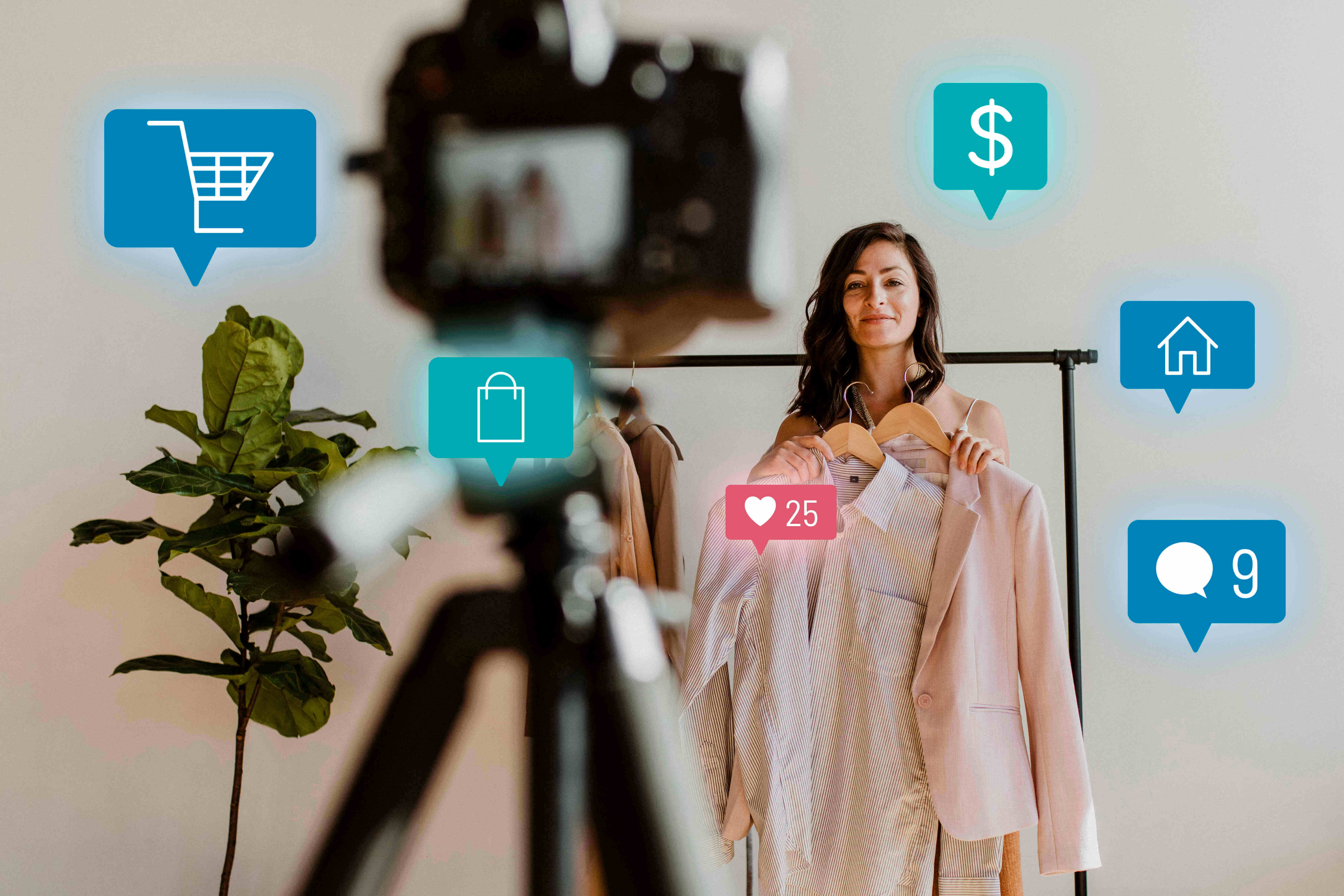 Finding the Right Local Influencer for Your Business!
Finding the Right Local Influencer for Your Business!
Influencer marketing is a 6.5-billion-dollar industry and the best marketing tool for businesses today.
As this online marketing strategy evolves, businesses are foregoing celebrity endorsements in favor of collaborating with local influencers in their community. Here’s why.
Benefit 1: Increases Brand Awareness
First and foremost, local influencers bring the names of businesses to the attention of people who were previously unaware of their existence.
Obviously, all types of influencers do this, but local influencers are more effective and successful for businesses in specific geographic areas.
Plus, local businesses can turn their favorite customers into their own personal influencers for a fairly low cost by offering small incentives, like food & drink or merchandise.
Benefit 2: Improves Engagement
Local influencers tend to have a deeper, more genuine connection with their followers than macro and celebrity influencers. They are more likely to know and connect with their followers on a more personal level.
Influencers with 100k or fewer followers, tend to make time for thoughtful responses and engagement.
According to research, influencers with 1,000 followers have the highest engagement ratio so don’t count them out because the ratio of engagement to followers is more important than the number of followers!
Instagram CEO Adam Mosseri is considering removing ‘likes’ from the social media platform entirely.
“We want people to worry a little bit less about how many likes they’re getting on Instagram and spend a bit more time connecting with the people that they care about.”
This potential evolution will make engagement an even more potent tool in the world of influencers.
Benefit 3: Less Expensive
Contrary to what you may think, local influencers do not need to be paid thousands of dollars to endorse your business. Many people are willing to be influencers in exchange for smaller incentives.
“When I post a photo for taco Tuesday, I get free queso? Please sign me up!”
Giving people the opportunity to try your product and share it with their friends and family is a great way to generate repeat business. It’s a win-win situation for both parties.
Influencers gain credibility for their recommendation, businesses gain new customers, and both gain exposure.
Benefit 4: Gives You Access to New Followers
Local influencers are ideal for small businesses because the majority of their followers will live in the same area who have never heard of your brand.
This means an influencer collaboration will allow you to reach a larger market of people who are close to your business but have never heard of our brand!
No matter how fantastic a local pizza joint is, it’s unlikely that someone will fly across the country to try it unless they’re already in town.
Maybe, unless they really love pizza, have a lot of spare cash, and are dying to go on a world’s best pizza tour. I mean come on… Never, ever say never, right?
However, if someone local is scrolling through Instagram and sees a friend raving about it, they may decide to check it out on their next date night or if visitors from out of town see rave reviews about how delicious your pizza is while searching for food on Google, they are likely to want to see for themselves.
Benefit 5: Enhances Authenticity
Marketing professionals have long recognized that word-of-mouth marketing is the most effective form of marketing. Local influencers do this without making it appear as if the company is bragging about itself.
It’s not salesy or gimmicky; it’s just a person sharing something they enjoy with the people in their network. As a result, people are much more likely to respond to a sponsored post from a business page or influencer with a million followers.
Benefit 6: Generates Fresh Content
Giving up some control and allowing an influencer to create their own content promoting your business accomplishes two important things.
Benefit 7: Followers Start to Trust You
When it comes to influencer marketing, savvy consumers are wary of celebrity endorsements.
Have you ever seen a celebrity in a skincare commercial claim that their secret to looking young is some miraculous anti-aging eye cream? I’m sure I’m not the only one who laughs at these commercials and immediately dismisses them.
But if a friend recommends a new restaurant that just opened up in my town, I am much more likely to try it than if a celebrity I don’t know recommends it or I see a TV commercial about it.
Local influencers’ human aspect is the future of Internet marketing. Consider the importance of quality above quantity. Even if they don’t have a large number of followers, they have a significantly better chance of reaching your target demographic.
Where Can I Find a Local Influencer?
Some of the most effective methods include:
What Does It Cost?
Prices and fees vary widely, from the micro-est of microlocal influencers who are happy to trade a post for products & merchandise from more established influencers depending on their followers you can expect to pay $.01 to $.025 per follower or more. If you use tools or an agency that cost can go up even more.
Wrapping Up
No matter how many followers they have, local influencers can help you grow your business’s social reach, improve your brand image, engage your audience, and attract new consumers.
So, what do you have to lose?
Now you’re armed with the information you need to pick the right local influencer for your business!
Tags: Marketing, Sales, Business Strategy
 10 Awesome Instagram Reel Ideas for Your Local Business
10 Awesome Instagram Reel Ideas for Your Local Business
If you’re like most small businesses, you’re always looking for new ways to reach your target audience and promote your products or services. And with over one billion active users, Instagram is a great place to start.
By taking advantage of the various features that Instagram offers for businesses, local businesses can level the playing field with larger companies. With the rise of Instagram reels, companies now have more options than ever to market their business in innovative and visually appealing ways.
In this guide we will cover ten different types of Instagram reels small businesses can use to promote their business. Whether you're a restaurant looking to showcase your delicious food or a local shop wishing to attract new customers, these reels will help get the job done!
These reels show your followers what goes on behind the scenes of your business. People love getting a sneak peek at how things are made or the logistics behind running a business. This type of reel can also help humanize your brand and make you more relatable to your customers.
To create a behind-the-scenes reel, simply start filming what goes on during a typical day at your business. You can show everything from the morning commute to prepping for customers to closing up shop at the end of the day. Be sure to add some fun music or interesting narration to keep things interesting!
If you're not sure where to start, why not film a day in the life of one of your employees? Show off your team and what they do to make your business run smoothly.
Customer testimonials show happy customers while promoting your business simultaneously. When potential customers see others had a positive experience with your business, they are more likely to give you a try.
To create a customer testimonial reel, simply film your customers talking about their experience with your business. Set up a camera in your store or office or send a survey to previous customers asking them to record a video testimonial.
If you're looking to endorse a new product or service, a product showcase reel will allow you to show off your product in all its glory and give potential customers a taste of what they can expect with their purchase.
To create a product showcase reel, start by filming a short introduction of your product. This should include information about what it is, how it works, and why people need it. Then, film a few quick clips of your product in action. Be sure to highlight any features or benefits that make it unique!
Finally, add a call-to-action at the end of your reel encouraging people to learn more or purchase your product.
A how-to reel is a great way to show your expertise and attract new customers. If you offer a service that people might not know how to do themselves, seize this opportunity to show them how it's done!
To create a how-to reel, start by choosing a topic that you're an expert in. This could be anything from making the perfect cup of coffee to how to change a tire. Then, film a short video showing people how it's done.
If you're looking for a way to share your valuable knowledge with the world, a tips and tricks reel is the perfect solution! In addition, this type of reel is ideal for businesses offering advice or for services people might not be familiar with.
To create a tips and tricks reel, start by brainstorming a list of subjects you're an expert on. Once you've got a few ideas, film a short video on each topic. Include any tips or tricks that you think will be helpful to your viewers!
Remember, the goal of a tips and tricks reel is to educate and inform your viewers - keep things clear and concise.
An FAQ reel addresses common questions and concerns that potential customers may have about your business. It can help put people's minds at ease and encourage them to do business with you.
Start by brainstorming a list of commonly asked questions about your business. When making the video, be sure to include clear and concise answers to each question!
You can also use an FAQ reel as an opportunity to address any negative reviews or feedback that you've received. FAQs are a great way to show customers you're open to feedback and willing to make changes to improve your business.
Remember, always keep things positive and professional!
People love a decent story, so why not tell them yours? A story reel allows you to introduce yourself and your business to potential customers. In addition, this type of reel will allow you to share your company's history, mission, and values with the world!
When creating a story reel, include information about your company's history, mission, and values. Then, film a few quick clips of your business in action. Be sure to highlight any special features or benefits that make it unique!
We've all seen the standard "sale" promotions, but why not get creative with your marketing? An unconventional advertisement stands out from the crowd and attracts new customers.
To create an unconventional promotion, start by brainstorming a list of unique ideas that will grab people's attention. Once you've got a few ideas, film a short video on each one. Include any distinct details or benefits that make your promotion irresistible.
Remember, the goal of an unconventional promotion is to get people talking about your business. So go ahead and think outside the box!
Your employees are the heart and soul of your business, so why not introduce them to potential customers? An introductory reel should include information about their role in the company and what they do daily. Then, film a few quick clips of your team in action. Finally, be sure to highlight any special skills or talents!
Remember, the goal of an introductory reel is to show potential customers that you're a team of experts who are passionate about what you do.
Instagram Reels can promote other content, such as blog posts, press releases, or featured articles.
To promote other content using Instagram Reels, start by filming a short clip of the content that you want to promote.
You can also use Instagram Reels to drive traffic to your website or blog. To do this, start by filming a short clip of your website or blog. Then, include a link to your site in your description and encourage people to check it out!
Instagram Reels will promote your business and attract new customers. By using some of the ideas in this guide, you can create killer content to help your business stand out from the crowd. When filming, keep things positive, professional, and creative! And most importantly, have fun!
Tags: Marketing, Sales
 5 Marketing Lessons from Pirate Movies: Loot All Your Competitors
5 Marketing Lessons from Pirate Movies: Loot All Your Competitors
With the Gasparilla Pirate festival coming this weekend to pillage the city of Tampa, it’s only fitting to talk about pirate movies.
Taranran Taranran Taranran Taranran
If you didn’t remember the Pirates of the Caribbean movie after reading this last paragraph, read it again, but as a song now...
Today we’re going to talk about what Jack Sparrow and other characters from popular pirate movies can teach us about marketing.
So, without further ado, let’s get started!
In the first movie of the Pirates of the Caribbean series, there is an interesting dialogue that goes as follows:
You are without a doubt the worst pirate I’ve heard of (James Norrington)
But you have heard of me (Jack Sparrow)
https://www.youtube.com/embed/wv9PWo-KLc0
Getting people talking about you is one of the most important things to build your brand. Naturally, you want people talking about you in a positive light. However, you don’t need to be afraid of bad publicity either.
Getting people to talk about you - both positively and negatively - will go a long ways when it comes to building your brand awareness. After all, it’s always better to have people talking about you than have no one talking about you at all. Plus, when people talk badly about your brand, it gives your loyal fans an opportunity to go out and defend you. And who doesn’t love knowing that there are people out there who are willing to go to bat on their behalf?
At the end of the day, your brand is the personality of your business. It’s what makes you truly unique from your competitors. People who love what you are doing will gravitate towards you, and those who don’t will flush themselves out.
And guess what? That’s OK. Your goal shouldn’t be to appease everyone.
Catching people's attention early on is imperative to contente marketing success. If you don’t engage people enough for them to keep reading, the rest of your content will be of no use, because no one will read or watch it.
We can see that in the first Pirates of the Caribbean movie. It starts with an interesting opening scene, which is pretty much everything you’d expect from a pirate movie: a mysterious vibe, with the ocean covered in fog, allowing you to see almost nothing. Building upon that, all you can hear is the “yo-ho” song.
This opening scene catches our attention and sets the tone for the story right away.
https://www.youtube.com/embed/dfPYuI1cBpc
Applying this to marketing, you should always invest time into creating a great headline, as well as an interesting opening paragraph or intro to your video. Time is a limited commodity. Do you REALLY want to waste it producing content that no one will ever see?
Being yourself is an extremely important part of building your brand and attracting the right types of customers to your business. This advice comes from Fezzick, who states:
People in masks are not to be trusted
(and no, they are not referring to COVID masks)
https://www.youtube.com/embed/aJW8KAiXFKo
In marketing, the concept of polarization is still alive and well, and it can easily be applied to brand building. A natural way of being polarizing is by not being afraid to be yourself. So, be bold and be brave by sharing your values, your mission, and what your company stands for... just perhaps not to the extent of the Elon Musk’s and Donald Trump’s of the world, otherwise you run the risk of coming across as crazy and unhinged.
We first heard about this concept from Russell Brunson. The following graph does a really nice job of explaining it.
If you want to attract raving fans to your brand, you need to be yourself and start being a little polarizing.
Blackbeard is one of the most famous pirates in history. What made him so famous was his reputation. So the biggest take away here is that reputation matters... and it matters a lot.
Blackbeard is painted as a violent and dangerous man who committed a lot of violent crimes. However, he wasn’t actually that dangerous as a man. He simply had a REPUTATION for being a dangerous man. And this reputation served him very well.
When Blackbeard approached other ships to loot, people immediately surrendered because they were afraid of him. This means he never needed to put his life, nor the life of his crew, at risk.
Your reputation is one of the most valuable assets you will ever have. In the words of Henry Ford:
You can’t build a reputation on what you are going to do
Keep in mind, however, that it’s only possible to build your reputation on what you are doing now, and what you’ve already done in the past.
Captain Phillips is a merchant marine captain whose ship was captured by pirates. During the movie, we can learn a lot about perseverance and leadership.
One of Captain Phillip's mantras is, “You’re stronger than you know.”
In the wild and wonderful world of marketing – and in business in general - you need a lot of strength and perseverance to be successful.
In fact, if you read the biography of almost any successful entrepreneur, you’ll find that they had a lot of failures along the way. This is common. The only thing that matters is your ability to persevere and keep going.
For example, maybe you didn’t see great results from your first Facebook ads campaign. All is not lost, since can still use the insights and analytics collected to build a better campaign the second time around.
Or maybe you’ve had abysmal results from your organic SEO efforts on Youtube. That’s not to say that with consistent effort, you won’t start reaping the benefits of that hard work 6 to 12 months from now.
You’ll never know if you don’t keep going.
Patience and perseverance are more important than you might think.
Listen, we get it: gleaning marketing insights from pirate-themed movies is a little “off.”
But all of the lessons we’ve outlined here are extremely valuable. And if you apply them to your business, marketing will no longer feel overwhelming or scary... or, you know, if we’re keeping with the pirate them, like you’re walking the plank.
Tags: Management, Marketing
 Choosing an Effective Marketing Budget
Choosing an Effective Marketing Budget
In order any business to thrive, you need customers. But customers don’t magically flock to your business just because your open sign is lit up. You need to reach the people that are interested in what you offer… And marketing is how you accomplish that.
Every business must decide how much they are going to spend on marketing. How do you determine what’s right for you? Marketing budgets vary based on a number of factors. A budget that works for one business may not work for your business.
You want a marketing budget that is efficient and effective. This decision impacts more than just one line in your bookkeeping: the purpose of marketing is to get that revenue number at the top thicker every day! Marketing exists to grow your sales and increase the number of opportunities you have as a business. But how do you find your magic number?
In a perfect world, an easy one-size-fits-all number could be given to any business creating their marketing budget. But, there’s a little more to it than that. The size of your company, type of industry, and business goals are just a few factors that can change the best budget for you.
Still, there are general standards you can adopt, assess, and alter to fit the needs of your business. Your marketing budget is communicated as a percentage of your revenue. For B2B businesses, 2-5% of your revenue is the recommended amount for your marketing budget. And if you’re a B2C business, 5-10% is a good rule of thumb.
This range is a good place to begin, but you can make yours more if it fits with your goals. Some experts recommend having a budget as high as 15-20% of your revenue. This may be for you if you are in a highly competitive industry or are at a point where you’re still a new business establishing your name.
It’s important to remember that marketing exists to make you more money. Instead of seeing your marketing budget as a loss for your business, view it as an investment. Successful marketing increases your revenue beyond the price you paid for it. That’s why results are measured as a Return on Investment, or ROI. Cutting your marketing budget to save money will often cost you more money in the end.
Just as important as choosing what to budget is choosing where to budget it. Where will you be marketing your business? What channels and strategies will be the most effective for you? How much money do you put into each marketing campaign?
Answering these questions will require you to think about the following.
Different Costs: Marketing efforts do not all operate the same. Therefore, their costs will not always correlate dollar per dollar. For example, getting a design package for your company when you’re just starting out – your logo, colors, fonts – is mostly a one-time cost. On the other hand, paying for a website includes not only a high upfront cost but also a regular cost for maintenance and hosting. It’s important to consider more than just the dollar amount spent for each marketing effort, as you’ll see next.
Your Company’s Goals: You should only pursue a marketing strategy that helps you reach your specific goals. Some campaigns build your brand’s name recognition. Others educate people about your products in more depth. And others exist to stand out against specific competitors. You may find a campaign that can help you reach all of these goals. Know your goals as a company first, so you can choose the best marketing solution for you.
Study Your Competitors: Understanding where your competitors are advertising can give you a good indication of where you should be too. Maybe they are finding success on a platform because that’s where your mutual audience is hanging out. You may find success on other platforms more than them, but don’t dismiss where they are doing well.
With these factors in mind, let’s look at some of the best marketing options out there to spend your marketing budget.
Company Image & Collateral: Whether you’re new or ready to rebrand, every business will need to establish an identity through a logo and other design elements including marketing collateral.The marketing collateral best for your business may vary, from infographics to case studies, eBooks to promotional videos. This marketing effort is an upfront cost with typically little regular upkeep involved, aside from creating additional collateral or rebranding in the future.
Website: When publishing a website you’ll need to keep in mind there will be an upfront design cost and some ongoing maintenance and hosting costs associated. Always connect and stay up to date with your website’s analytics to measure your progress and see where you may need to improve your site.
Local SEO: Your local SEO contributes greatly to your visibility online. It helps people find you. This marketing effort is an investment that will take time to establish and see results. But overall it is the best long term solution for local traffic.
Marketing on Social Media: Many businesses today are thriving by running organic posts on social media platforms. While you may not be paying the platform to publish these posts, building a following will take time. You may need to hire a social media specialist to manage your account. Consider the cost of running your social media in house compared to outsourcing to a social media expert.
Paid Online Ads: Advertise online for instant targeted traffic. Facebook, Instagram, and pretty much every other social media platform today offer sponsored posts on their platforms. Do you already have a strong presence on a specific platform? A sponsored post will boost your reach even further and funnel consumers to your organic posts. You can also opt for search engine advertising options like Google.
Choosing a marketing budget is a cycle, not a one and done situation. It can be tempting to make a marketing budget, decide how much you will spend on each channel, and walk away. But don’t forget to measure your marketing’s success and adjust regularly. This is what will make your marketing the most efficient and effective.
Did your marketing efforts work on one channel but provide no ROI on another channel? Adjust your marketing budget to spend less money on the less successful strategies and more on those that performed well. An effective marketing budget translates to a successful and steady increase in revenue for years to come.
Tags: Business Strategy, Marketing
 7 Pro Ways to Boost Your Conversions
7 Pro Ways to Boost Your Conversions
It’s no secret that every business needs customers to generate revenue and profits.
And in order to survive in this competitive post pandemic market, you need to maximize your conversion rate in order get the absolute most out of your marketing efforts.
So if your leads are not converting into paying customers, it’s time you need to work on improving your conversion rate. Here’s 10 tips you can start with.
Why is this?
People are lazy. The shorter your forms are, the less informational fields they need to fill out - the higher your conversions will typically be. Whether it’s for a custom quote, or an optin for a lead magnet – keep the forms as short and easy to complete as you can. Less is definitely more, and if they decide to move forward with your services you can always request more info from them once they’ve sent a deposit
According to research, it takes one bad experience for a customer to turn your competitors.
Do you find that your website visitors ask the same questions frequently? Live chatbots can interact with your customers 24-7 and guide them to the next steps and answer their general questions without a live human to help them.
A chatbot can help you provide a better customer experience whether they need basic info like providing them with your contact information, hours of operation, location information, even checking availability and booking appointments – all without a human.
With a chatbot, providing helpful support makes the journey from visitor to customer more seamless than ever before!
A/B testing, also called split testing, is a method in which you test the two different versions of color, shape, size, placement, and format of elements to know what’s working best for your audience.
You can experiment with different elements at different stages and determine the best one. For example – you can create two copies of the same page and test each one on a different group of visitors to find out the best performing one.
You can also test different design layouts. Button colors, shape, size, and Placement – Experiment with these elements to achieve the best results as well as optimizing your content based on your customer avatar.
It’s important nurture and educate your customers about your business, industry, product, or the services you offer. A well-constructed lead magnet can help you nurture your leads and guide them to taking the next step in your funnel like booking a consultation or getting a free quote.
Lead magnets can be a great tool to convince your customer that they’ve found the solution they are looking for with your business. So make sure you make a good impression and your lead magnet is designed to encourage users to take action (Sign up to your newsletter, buy a product, visit your physical business location or schedule a call).
Your visitors are not obligated to do business with you. They already have too many options so if your website takes longer than expected to load, they will turn to your competitor’s site.
A slow-loading website is the most common reason for users to click on the back button before they’ve even been to your website! So, make sure your website loads faster. You can use Google’s page speed.web.dev to check your site speed for both mobile and desktop; if the score for either of one is below 90, you need to work on your website’s loading speed.
Using Pop-ups is a great way to capture a visitor’s contact info before they leave your website, but don’t be obnoxious about it. Pop-ups work but be smart about where & when you use them.
Also, make sure they have a clearly visible option to exit the pop-up if they aren’t interested in it. And once users skip it, they should not see it repeatedly on your site’s next pages.
User-generated content such as video, testimonials, comments, recommendations, and textual reviews are the best social proof that will help increase your audience’s trust in your business.
Social proof encourages users to do business with you because it works very similar to how a recommendation works by tapping into the basic human instinct to follow the actions of others.
There you have it. 7 helpful ideas you can use right away to start improving your conversions. I hope you found these tips helpful and ready to implement them on your website and future marketing campaigns. With a little effort you can make a big difference in your conversion goals.
Tags: Business Continuity, Business Strategy
 Market Your Business on a Shoestring Budget
Market Your Business on a Shoestring Budget
Behind every successful business is a good marketing strategy. But sometimes your budget is tight and you can’t afford to spend the big bucks on advertising. When this happens, it’s easy to cease all marketing efforts. But a small budget isn’t a good reason to neglect your marketing. There are many ways you can keep your marketing strong — even on a shoestring budget.
There are three core elements to a strong, inexpensive, modern marketing strategy: a strong social media, great relationships, and a pristine online presence. If you can rock these three by centering your marketing efforts here, the sales will follow. Even without the big marketing budget.
There’s no way around it: our modern world requires a strong social media presence. But many businesses don’t know where to begin with social media. Which platform is best for you? What kind of content do you share? How do you share it?
Regardless of which platform you choose and how you build your social media presence, there are three solid action steps you should take to make the most out of social media marketing.
All of the big social media platforms today — Facebook, Youtube, TikTok, Instagram, and so on — have the feature to go live. Live videos are trending in 2022, so today is a great time to begin. You can use a live stream to run a Q&A for your followers, host someone for an interview, demo and sell your products, share behind the scenes, or anything else you can come up with.
The point is to connect with people. Video content establishes trust in a brand, builds relationships and intrigue into what you offer. These are all valuable results that lead to sales. Live video amplifies these traits even further in a more intimate setting. Make a point to go live at least once a week to reap in these benefits.
Whatever platform you choose to stick with and whatever form of content you choose to share, there is one thing you should always be doing on social media as a business: share value. People like to follow thought leaders, experts, and professionals who teach them as well as help them to be better and grow.
Consider how you can bring value to your audience with your content. How can you establish yourself as a thought leader or expert? People will buy from experts. Be on social media not just to get others to buy from you, but to give openly to them as well. This will help you long-term in both sales and your company values.
Another solid strategy for every social media platform is to be consistent. Whether you are tweeting, tiktoking, instagramming, or any other sharing: be consistent. What does consistency look like? Posting regular content. Whatever you’re sharing, share it often. The more active you are, the more often people see you and the better rapport you build. And remember, your content does not have to be perfect to post regularly.
Consistency also means actively and regularly engaging with other users on the platform. Don’t just post and walk away. Social media platforms are looking to share the profiles who are actively engaging and building community with others. This could look like commenting, sharing, saving, or liking content from others on the platform. Staying consistent is one very simple but important way to build your following on social media, and increase your sales through this valuable and inexpensive form of marketing.
Businesses thrive by building relationships. It’s always been this way. People want to buy from someone they know they can trust. They want a reliable product or service that is worth their investment. And when you build this relationship and come through for them, they will use their relationships to tell others about you. Here are three ways you can build great relationships and continue to market your business on a budget.
From start to finish, you want your customer experience to be exceptional. Look at your business now. Follow a customer through your pipeline and experience the process someone would go through from learning about your business to after they’ve made a purchase.
Collect their contact information as soon as you can and communicate to them personally throughout the entire process. And don’t stop after they’ve made their purchase. Repeat customers are extremely valuable. Continue the communication and build the relationship even after the sale so you can tap into that lucrative repeat business.
Word of mouth is often a large part of how businesses make money. This method does rely on your customers to share your business with others. But that doesn’t mean you don’t play a part. Here are three ways to increase your word of mouth business:
Finally, a simple and inexpensive way to market your business today involves creating a pristine online presence. Where does your business appear online? Here are a few online presences every business should have online:
Having an online presence is great. But if your branding, colors, messaging, contact information, and so on are not consistent among these platforms, an online presence may actually work against you. Here are 3 quick ways to keep these presences working for you.
Search Engine Optimization (SEO) is a must for businesses today. While this can be a large marketing effort on which you can spend a lot of money, there are a few simple ways you can streamline your SEO as much as possible on your own.
Whether you’re building a social media presence, website, or any other online activity, your branding must be consistent.
Don’t have an old logo on your social media platform that’s different from the logo on your website. If you’ve changed niches recently, make sure your messaging is updated everywhere. You want someone to recognize you no matter where they find you online.
Don’t give up on marketing just because you can’t spend a lot of money on advertising at the moment. Your business can still thrive even on inexpensive marketing efforts. Remember, most marketing strategies are built upon the same value: building relationships. Every one of these tips is about building relationships.
On a budget, you can still build relationships on social media through live streams and consistent engagement. You can grow relationships with your customers through a unique customer experience and playing your part in word of mouth marketing. And you can clean up your online presence so people can recognize and trust you whether they see you on social media, Google, or your own website.
Tags: Business Continuity, Business Strategy
 6 Ways Small Businesses Are Leveraging AI
6 Ways Small Businesses Are Leveraging AI
Every day, artificial intelligence gets smarter and easier to work with. And it’s no longer just for the large businesses and corporations. AI is accessible to small businesses today more than ever before.
The power of AI lies within its ability to gather and interpret large amounts of data very quickly. Using AI, you can automate and personalize your marketing. You can save time and money spent analyzing data and creating strategies, giving you time to focus on what’s most important to you.
Exciting advances in AI are shaping and reshaping marketing operations. In fact, more than 60% of marketers not only use AI, they say it’s the most important aspect of their data strategy.
Here are 6 easy ways you can leverage AI for your business.
We’ve probably all experienced something similar: you’re shopping online for a pair of running shoes. You compare a few styles and exit out of the site. Next thing you know, every website you visit has advertisements featuring running shoes. You can thank the power of AI. It knows you’re looking for a pair of running shoes, so it’s going to pop in wherever you go to remind you of those shoes you still need to buy.
Using AI to gather market intelligence and data like this means your business can target the right people. You can have a great marketing campaign. Great visuals, great copy, a great hook. But if the right people aren’t seeing it, it won’t matter. AI can help you reach the right people.
By recording the demographics of your current audience as well as whoever interacts with your company online, AI tools can optimize your target audience. You can then use AI to create customer profiles and curate marketing that targets each person uniquely. Efficient targeting means a great return of sales.
Insert Customer service
People talk to computers all the time. We ask Google and Alex questions daily. A chat bot is the same concept. Most people ask the same service-based questions over and over. Instead of paying an employee to sit and answer repetitive customer service requests all day, you can utilize a chat box for these simpler inquiries.
Customers are becoming more open to accepting help from chatbots. A recent survey discovered 40% of people will accept help from a chatbot immediately. This frees up customer service agents from dealing with repetitive small issues, allowing them to only work with the larger and more urgent issues.
Whether you’re meeting with a paying customer or running through a sales demonstration with a potential client, getting an accurate appointment booked is important. And you want to make it as easy as possible for them to book with you.
AI systems have auto-scheduling features every business should be taking advantage of. You can tell the system who is scheduled that day and how much time there needs to be in between appointments, among other rules. From there, the system can walk a visitor through scheduling their appointment automatically, all without the use of an admin to manually schedule an appointment.
Good businesses are run by good people. But finding good people can be exhausting. And if you’re a small business, you don’t have enough resources to dedicate a whole department just to finding good people. You need good people and you need them now.
Bet you guessed the answer here: there’s an AI tool for that! Several dozen AI tools, actually, all specializing in recruiting. These tools simplify your talent acquisition process by screening, assessing, and even interviewing candidates.
What time of day should you post on social media, send an email, or run an advertisement? How do you find your ideal audience? You guessed it: through the power of AI.
AI tools can run tests for what time of day is best to make an action. They are also responsible for your ability to target exactly who you want to send your advertisement to online. This optimizes your ad budget so you’re not wasting money advertising to the wrong people or at the wrong time.
Do you have a marketing email to send out but are torn between two designs? You don’t have to just guess which is better. With AI, you can run an A/B test.
With an A/B test you tell your system to send a fraction of your email list Email Design A and another fraction Email Design B. If Email Design A was opened and engaged with more, the remainder of your email list receives that design. No more guessing which design is better!
When you’re a new business, you are constantly creating, developing, and testing new strategies. And that’s fine while you are new. But the one thing every business needs to scale sustainably is a clear and organized process.
After you create a process, you can pass it on to an AI system that can run it for you. This frees up your hands to grow another part of your business. And the cycle repeats, until your business is a large and efficient operation, with the assistance of AI.
And it’s more than the small tasks. AI can also take on large compilations of data and run formulas to make decisions for your marketing strategies. You can use AI to automate, personalize, and optimize your marketing process every step of the way.
As technology continues to get smarter, every business will be relying on AI in some way. No more spending long hours manually completing simple marketing tasks. They are essential to the marketing process but can now be handed off to a computer. Run your business efficiently and make more money with the help of AI and easy solutions like these.
Tags: Business Continuity, Business Strategy
 Video Marketing 101 for Local Business
Video Marketing 101 for Local Business
If content is king, then video content is the reigning emperor. By 2022, online videos will make up more than 82% of all consumer internet traffic - 15 times higher than in 2017. If you want to engage with internet users who make up most of the world’s population, you need compelling, attractive, and engaging video marketing strategies.
Running a successful business is all about managing operating costs while increasing sales and revenue. To do this, you need to choose strategies that have the highest ROI. Technology has finally caught up video marketing. Now practically everyone has a smartphone in their pocket capable of making movies that could be featured in the Sundance Film Festival.
It doesn’t take much to create an engaging video with nothing more than some decent lighting and a compelling story. This is perfect for smaller businesses that may not have deep pockets for their marketing campaigns but still want to do something relevant.
There are many types of video content your small business can create, including:
With every one of these options, you have the opportunity to feature local-based talent, locations and content to engage your audience with.
There was a great study done a while ago featured on the Significant Objects site where the experimenters decided to sell ordinary items they found at thrift stores and add compelling stories written by professional writers and authors. The result was practically a 20X increase in product value on average. Imagine selling a $1.25 item for almost $8,000!
Brand narratives increase brand value. This is a proven fact. If you want to increase the value of your company, tell a story through your video marketing. Personalize your content with local traditions that evoke an emotional reaction by your audience and use supporting data to hammer home those reactions.
A great example of this is High Brew Coffee. Their brand story revolves around the founders, a married couple, drinking bold, cold brew coffee packed with caffeine to stay alert during a six-month rafting adventure through the Caribbean. The copy for that brand story practically writes itself.
A woodworker named Marc Spagnuolo decided to take his hobby of making quality wood products online in 2006. Little by little, he made videos about how to construct custom bookcases, toy chests, and chairs, and his audience grew. He is currently sitting on 745,000 YouTube subscribers and a growing company that sells membership plans, books, instructional videos, and supports a local charity.
This man is not the best in the world, and he never claims to be. His personable style and authenticity as a local husband and dad showing other people a valuable skill makes his videos highly valuable for customers across the globe. This has transformed his small business into a thriving online community.
What no one talks about is the marketing genius behind this company, the founder’s wife, Nicole. She took his videos and plastered them all over social media, their customized website, in email campaigns, and with any collaborators willing to give them some space. She leveraged the small-town charm of her craftsman husband to build a family business that will probably pay for the college education of their great-grandchildren.
Viral content typically evokes high-arousal emotions. We’re not talking about the “sideways no-pants dance” either. It means feelings that evoke a physical response. Think about those commercials and online videos that ignite something inside of you and triggers an emotional response.
The brand Always did a commercial a few years ago using the hashtag #likeagirl. In this commercial young actors were asked to perform actions "like a girl" including running, throwing, and fighting. In cases with boys or woman (older than their teens) they would mimic stereotypical actions of flailing around, and looking week.
When the director asked the young girls 10-12 years old to perform the same actions. They do them normally, and often with incredible vigor. This creates a brand story that supports teaching a new way of thinking about our society while celebrating woman - Always' target audience It evokes a feeling of inspiration and hope which makes it relatable and memorable.
While not every business will have a genius marketer like those behind this commercial, the basic principles can be weaved into your local advertising techniques. Evoke a strong emotion when you celebrate your local traditions and the things that make a Mainer a Mainer and a Californian a Californian.
If nothing else, remember the three E’s of video marketing: engage, educate, and energize. Upload your videos on the platforms where your target audience will be most likely to watch. Next, educate them with compelling copy that is relatable and relevant to them. Finally, energize them with your brand story that includes a CTA worthy of the video.
Video content is a powerful tool that can be utilized by companies both large and small - but it is especially valuable for smaller businesses. It's initial low-cost, and potential high ROI makes getting noticed over your competition easier than ever before. It allows you to engage with your audience in ways that just were not possible 10 years go. Leverage your video content across social media, and you will be rewarded with a new stream of targeted traffic that can be tapped into time and time again.
Tags: Business Strategy, Business Continuity